20 Most Romantic Destinations in India
here's a curated list of the 20 most romantic destinations in India that promise to set the perfect stage for couples seeking love and adventure.

India, a land of diverse landscapes and cultural treasures, provides an enchanting canvas for romantic getaways. From the snowy peaks of the Himalayas to the serene beaches of the south, here's a curated list of the 20 most romantic destinations in India that promise to set the perfect stage for couples seeking love and adventure.
Udaipur, Rajasthan
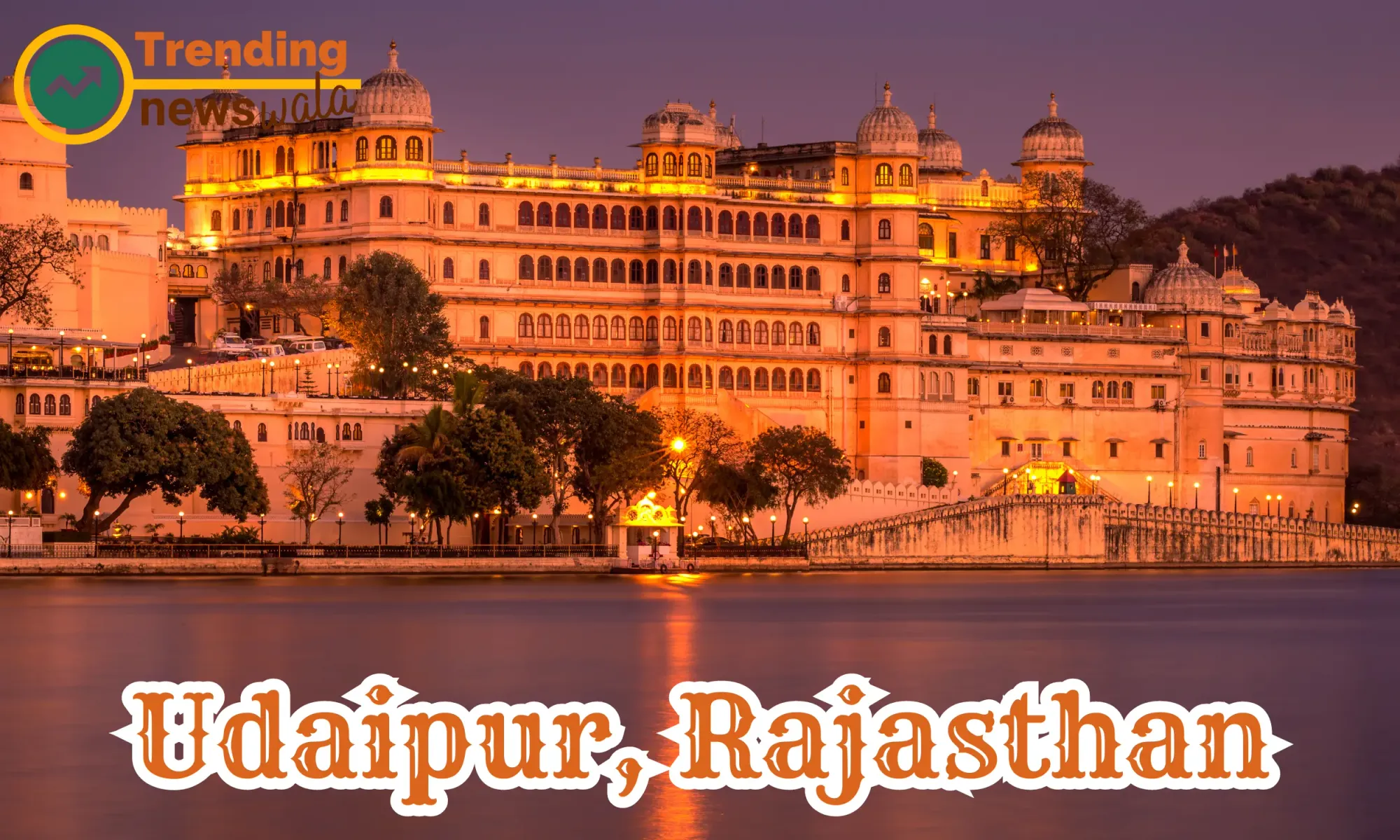
Certainly! Udaipur Romantic Destinations in India, located in the western Indian state of Rajasthan, is a city known for its rich history, stunning architecture, and picturesque landscapes. Often referred to as the "City of Lakes" or the "Venice of the East," Udaipur is celebrated for its regal palaces, serene lakes, and vibrant cultural heritage.
- Historical Significance: Udaipur was founded in 1559 by Maharana Udai Singh II, the ruler of the Mewar Kingdom. The city served as the capital of the kingdom, and its foundation is attributed to the guidance of a sage who advised Maharana Udai Singh to establish the city at the banks of Lake Pichola.
- Architectural Marvels: The city is renowned for its magnificent palaces, forts, and temples. The City Palace, perched on the banks of Lake Pichola, is a grand complex that offers breathtaking views of the city and the surrounding hills. The intricate architecture, vibrant colors, and artistic details make it a must-visit attraction.
- Lake Pichola: Lake Pichola, an artificial freshwater lake, is one of the most iconic features of Udaipur. Boating on the lake provides a romantic and scenic experience, especially during sunset. The lake is surrounded by hills, palaces, and ghats, adding to its charm.
- Jag Mandir and Jag Niwas (Lake Palace): Jag Mandir and Jag Niwas, situated on islands within Lake Pichola, are architectural marvels. Jag Niwas, also known as the Lake Palace, is a stunning white marble palace that appears to float on the lake. It has gained international fame and was even featured in the James Bond film "Octopussy."
- Saheliyon ki Bari: Saheliyon ki Bari, translated as the "Garden of Maidens," is a beautiful garden adorned with fountains, kiosks, marble elephants, and a delightful lotus pool. It was designed as a recreational area for the royal ladies.
- Cultural Heritage: Udaipur is deeply rooted in Rajputana culture. The city hosts numerous festivals, cultural events, and traditional performances that showcase the rich heritage of Rajasthan. Visitors can witness traditional dance forms, music, and colorful processions.
- Fateh Sagar Lake: Fateh Sagar Lake is another prominent lake in Udaipur, surrounded by hills and offering boat rides. Nehru Park, located on an island in the lake, provides a serene escape. The lake is named after Maharana Fateh Singh of Udaipur.
- Local Markets: Udaipur is known for its vibrant markets, offering traditional Rajasthani handicrafts, textiles, jewelry, and souvenirs. The markets around City Palace and Jagdish Temple are popular among tourists.
- Jagdish Temple: Jagdish Temple, located near the City Palace, is a large and artistically significant Hindu temple dedicated to Lord Vishnu. The intricately carved architecture and religious ceremonies make it a cultural gem in Udaipur.
- Luxury Hotels: Udaipur is home to several luxurious heritage hotels, including the Taj Lake Palace and the Oberoi Udaivilas. These hotels, often former palaces, provide an opulent and regal stay experience, allowing guests to immerse themselves in the royal ambiance.
Shimla, Himachal Pradesh

Certainly! Shimla,Romantic Destinations in India, the capital city of the northern Indian state of Himachal Pradesh, is a charming hill station nestled in the foothills of the Himalayas. Renowned for its colonial architecture, scenic landscapes, and pleasant climate, Shimla has been a popular retreat for both tourists and locals for many decades.
- Colonial History: Shimla served as the summer capital of British India during the colonial era. The city was favored for its cool and salubrious climate, providing respite from the scorching heat of the plains.
- Mall Road: The heart of Shimla is its iconic Mall Road, a bustling promenade lined with shops, restaurants, and colonial-era buildings. Strolling along Mall Road allows visitors to soak in the vibrant atmosphere and enjoy panoramic views of the surrounding hills.
- The Ridge: The Ridge is an open space located along Mall Road and serves as a hub for cultural activities and festivities. The Christ Church, the second oldest church in North India, and the neo-gothic architecture of the Gaiety Theatre are notable landmarks on The Ridge.
- Scandal Point: Scandal Point, located on The Ridge, is a popular spot with a fascinating legend. According to local lore, the Maharaja of Patiala eloped with the daughter of the British Viceroy from this point, leading to its intriguing name.
- The Viceregal Lodge (Rashtrapati Niwas): The Viceregal Lodge, also known as Rashtrapati Niwas, is a majestic structure built in the Jacobethan style. Once the summer residence of the British Viceroy, it now serves as the Indian Institute of Advanced Study. The lodge offers guided tours showcasing its history and architectural grandeur.
- Shimla State Museum: The Shimla State Museum, located on Mount Pleasant, houses a diverse collection of artifacts, photographs, and sculptures that depict the cultural and historical heritage of Himachal Pradesh.
- Jakhoo Temple: Jakhoo Temple is dedicated to Lord Hanuman and is situated on Jakhoo Hill, the highest peak in Shimla. The temple offers panoramic views of the surrounding mountains, and visitors can often spot monkeys on the way up.
- Kufri: Located a short drive from Shimla, Kufri is a popular hill station known for its scenic beauty and adventure activities. The Himalayan Nature Park and the Mahasu Peak are major attractions, and during winters, Kufri transforms into a winter sports destination.
- Shimla Toy Train: The Kalka-Shimla Railway, a UNESCO World Heritage Site, is a narrow-gauge railway that connects Shimla to Kalka. The toy train journey, passing through tunnels and over bridges, offers breathtaking views of the Himalayas and is a memorable experience.
- Summer Festival: Shimla hosts the Summer Festival every year in May, showcasing local culture, music, and dance. The festival of India includes events such as flower shows, folk performances, and a vibrant street parade.
- Adventure Activities: Shimla offers various adventure activities, including trekking, paragliding, and skiing (in winter). The surrounding hills and forests provide ample opportunities for nature enthusiasts and adventure seekers.
Shimla's timeless beauty, combined with its colonial heritage and natural attractions, makes it a year-round destination for those seeking a tranquil escape in the lap of the Himalayas. Whether it's a leisurely stroll on Mall Road, exploring historical landmarks, or embracing the adventure in the nearby hills, Shimla has something to offer for every traveler.
Goa

Goa Romantic Destinations in India, a small coastal state on the southwestern coast of India, is renowned for its stunning beaches in goa, vibrant nightlife, rich cultural heritage, and lush landscapes. Often referred to as the "Pearl of the Orient," Goa is a popular destination that attracts a diverse range of travelers, from beach enthusiasts and partygoers to history buffs and nature lovers.
- Beaches: Goa is synonymous with its pristine beaches, each offering a unique atmosphere. Some of the popular beaches include Baga Beach, Calangute Beach, Anjuna Beach, and Palolem Beach. These sandy stretches are known for their vibrant shacks, water sports in goa, and lively ambiance.
- Nightlife: Goa's nightlife is legendary, drawing revelers from around the world. The beachside clubs, shacks, and bars come alive after sunset. Tito's Lane in Baga and the beachfront shacks at Anjuna are famous for their energetic parties and live music.
- Historical and Cultural Heritage: Goa has a rich historical legacy shaped by centuries of Portuguese colonial rule. The influence is evident in the architecture of churches, forts, and houses. The Basilica of Bom Jesus, Se Cathedral, and Fort Aguada are iconic landmarks reflecting Goa's cultural and religious diversity.
- Cuisine: Goan cuisine is a delightful blend of Indian and Portuguese flavors. Seafood is a highlight, with dishes like fish curry rice, prawn balchão, and vindaloo gaining popularity. The beachside shacks and local markets offer a variety of delectable treats.
- Water Sports: The beaches of Goa are perfect for water sports enthusiasts. Activities such as parasailing, jet-skiing, banana boat rides, and windsurfing are readily available at various beaches, providing an adrenaline rush for adventure seekers.
- Wildlife Sanctuaries: Goa is home to several wildlife sanctuaries, offering a different perspective from its lively beaches. Bhagwan Mahavir Wildlife Sanctuary, Cotigao Wildlife Sanctuary, and Salim Ali Bird Sanctuary provide opportunities for nature lovers to explore the region's biodiversity.
- Dudhsagar Waterfalls: Dudhsagar Waterfalls, located in the Bhagwan Mahavir Wildlife Sanctuary, is one of the tallest waterfalls in India. The cascading white waters amid lush greenery create a breathtaking sight. Visitors can reach the falls by trekking or take a jeep safari.
- Flea Markets and Night Markets: Goa is famous for its vibrant flea markets and night markets. Anjuna Flea Market and the Saturday Night Market in Arpora are popular among tourists. These markets offer a wide range of items, including clothing, jewelry, handicrafts, and local artifacts.
- Silent Discos: Goa is known for its unique silent discos, where partygoers wear headphones and dance to music without disturbing the serene beach environment. This innovative concept has become a signature attraction in the nightlife scene.
- Festivals: Goa hosts various festivals throughout the year, celebrating its cultural diversity. The most famous is the Goa Carnival, a vibrant and colorful event with parades, music, and dance. Shigmo, celebrated during spring, is another lively festival.
- Waterfall Trails: Apart from Dudhsagar, Goa offers several other waterfalls, such as Arvalem Waterfall and Kesarval Spring. These locations are ideal for nature walks, picnics, and enjoying the serene beauty of the Goan countryside.
- Yoga and Wellness Retreats: Goa has become a hub for yoga and wellness retreats. Numerous resorts and wellness centers offer yoga classes, meditation sessions, and spa treatments, providing a tranquil escape for those seeking relaxation and rejuvenation.
Goa's allure lies in its versatility, catering to the desires of sun-seekers, party animals, history enthusiasts, and nature lovers alike. With its laid-back charm and vibrant energy, Goa remains a destination that captures the hearts of all who visit.
Alleppey, Kerala
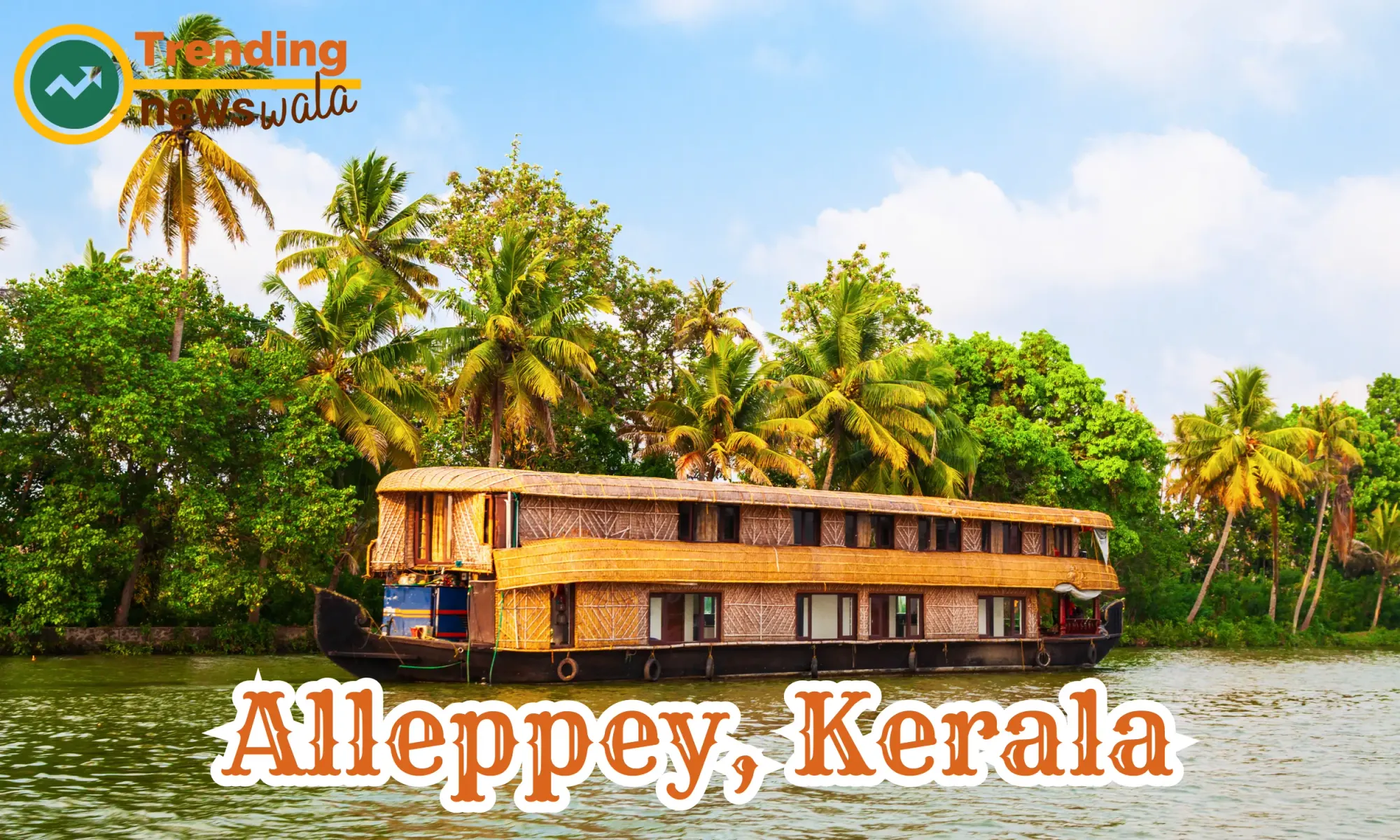
Alleppey Romantic Destinations in India, officially known as Alappuzha, is a picturesque town located in the southern Indian state of Kerala. Famous for its intricate network of backwaters, serene houseboat cruises, lush paddy fields, and pristine beaches, Alleppey is often referred to as the "Venice of the East." This coastal town offers a unique and tranquil experience, making it a popular destination for both domestic and international travelers.
- Backwaters and Houseboats: Alleppey is renowned for its backwaters, a network of interconnected canals, rivers, and lakes that weave through the town and surrounding areas. Houseboat cruises on these backwaters are a signature experience, allowing visitors to enjoy the scenic beauty, observe local life, and relax in the comfort of traditional houseboats.
- Nehru Trophy Boat Race: The Nehru Trophy Boat Race, held annually in Alleppey, is a major attraction that draws crowds from all over. It is a traditional boat race featuring long snake boats rowed by teams of oarsmen. The race takes place in Punnamada Lake and is a vibrant and exciting cultural event.
- Alleppey Beach: The Alleppey Beach, also known as Alappuzha Beach, is a tranquil stretch of golden sand along the Arabian Sea. Visitors can enjoy a leisurely stroll, engage in water activities, and witness the mesmerizing sunset views over the sea.
- Marari Beach: Marari Beach, located a short distance from Alleppey, is a pristine and relatively secluded beach. It offers a peaceful retreat with swaying palm trees, soft sands, and clear waters. The beach is known for its tranquility and is ideal for those seeking a quiet escape.
- Kuttanad: Kuttanad, often referred to as the "Rice Bowl of Kerala," is a region in Alleppey known for its vast expanse of paddy fields below sea level. The scenic landscapes, traditional villages, and vibrant greenery make Kuttanad a captivating destination for nature lovers.
- Krishnapuram Palace: The Krishnapuram Palace is a historical site showcasing Kerala's architectural and cultural heritage. The palace houses a museum with exhibits such as antique sculptures, paintings, and artifacts. The palace is known for its stunning mural depicting the Gajendra Moksha, one of the largest mural paintings in Kerala.
- Pathiramanal Island: Pathiramanal, meaning "Sands of Night," is a small island in Vembanad Lake near Alleppey. Accessible by boat, the island is a haven for birdwatchers, with a variety of migratory and resident bird species. It's an ideal destination for nature enthusiasts seeking tranquility.
- Ayurvedic Wellness: Alleppey offers various Ayurvedic wellness centers and spas, where visitors can indulge in traditional Ayurvedic treatments and massages. These wellness experiences provide relaxation and rejuvenation in the midst of the serene surroundings.
- Punnamada Lake: Punnamada Lake is one of the major lakes in Alleppey, known for its scenic beauty. Houseboat cruises often traverse through this lake, offering glimpses of traditional village life along the banks.
- Cultural Experiences: Alleppey provides opportunities to witness traditional art forms and cultural performances. Kathakali dance, Kalaripayattu martial arts, and classical music performances are often organized, allowing visitors to immerse themselves in Kerala's rich cultural heritage.
Alleppey's unique blend of backwaters, beaches, cultural experiences, and traditional houseboat cruises make it a captivating destination that showcases the natural beauty and cultural richness of Kerala. Whether it's a serene cruise through the backwaters or a leisurely day at the beach, Alleppey offers a tranquil escape for travelers seeking a laid-back and rejuvenating experience.
Agra, Uttar Pradesh
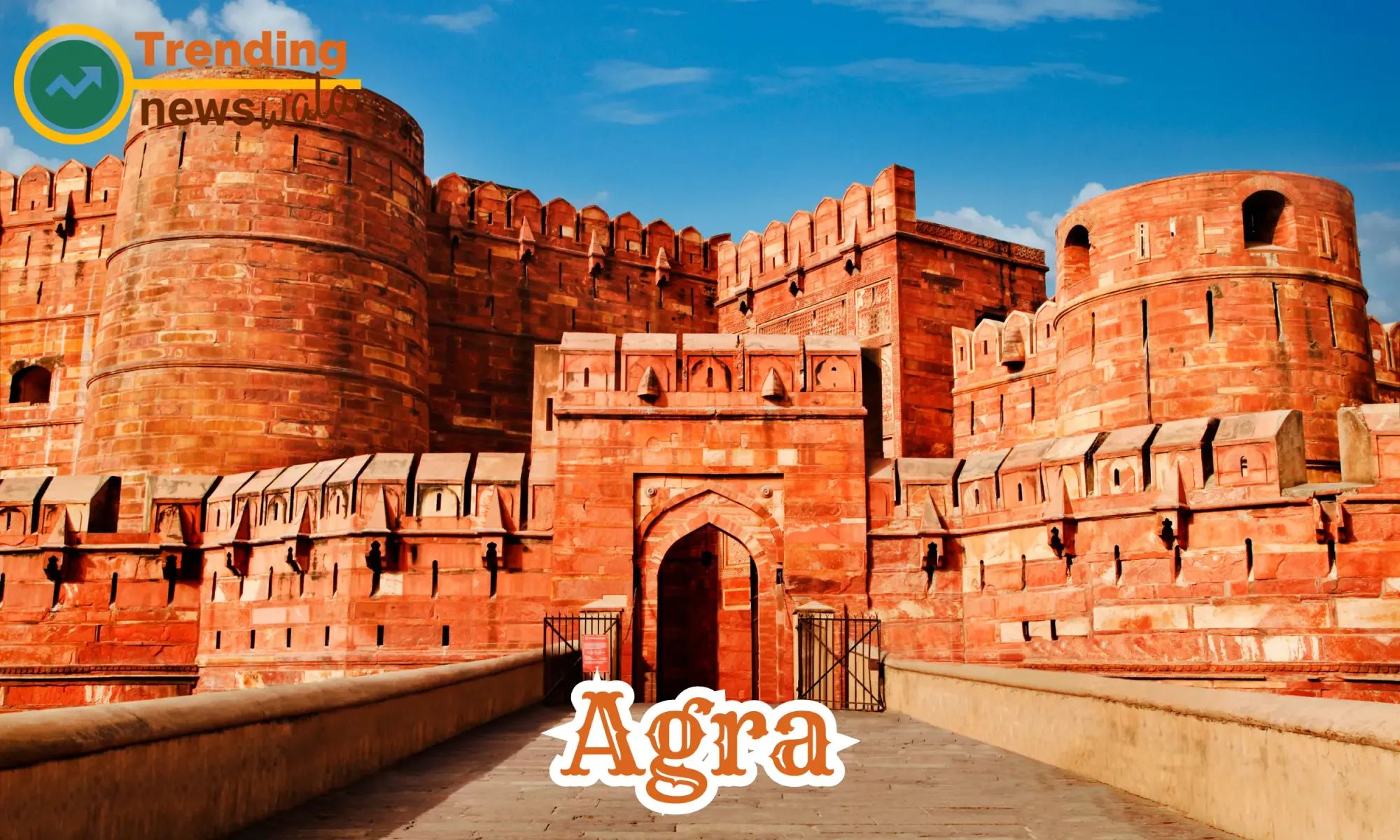
Agra Romantic Destinations in India, located in the northern Indian state of Uttar Pradesh, is a city steeped in history and cultural significance. Renowned for being the home to one of the Seven Wonders of the World, the Taj Mahal, Agra is a major tourist destination that attracts millions of visitors from around the globe. Beyond the iconic Taj Mahal, Agra boasts a rich historical legacy, including other architectural marvels, vibrant markets, and a cultural tapestry that reflects the grandeur of its Mughal past.
- Taj Mahal: The Taj Mahal, an exquisite white marble mausoleum, is the most iconic symbol of Agra and India. Built by Emperor Shah Jahan in memory of his beloved wife Mumtaz Mahal, the Taj Mahal is a UNESCO World Heritage Site and attracts visitors with its impeccable architecture, intricate marble inlay work, and the emotional love story behind its creation.
- Agra Fort: Agra Fort, another UNESCO World Heritage Site, is a massive red sandstone fort situated on the banks of the Yamuna River. Built by Emperor Akbar, the fort served as the main residence of the Mughal emperors for generations. The fort's architecture reflects a blend of Mughal and Hindu styles.
- Fatehpur Sikri: Located near Agra, Fatehpur Sikri is a historic city founded by Emperor Akbar in the 16th century. The city served as the capital of the Mughal Empire for a brief period before being abandoned. The architectural splendors of Fatehpur Sikri, including the Buland Darwaza and Jama Masjid, continue to attract history enthusiasts.
- Mehtab Bagh: Mehtab Bagh, or the Moonlight Garden, is situated across the Yamuna River from the Taj Mahal. It offers stunning views of the Taj Mahal, especially during sunset. The garden provides a peaceful retreat and an opportunity for visitors to capture the iconic reflection shot of the Taj Mahal in the Yamuna.
- Jama Masjid: Agra is home to the Jama Masjid, one of the largest mosques in India. Built by Shah Jahan, the mosque exhibits impressive Mughal architecture with intricately designed domes and minarets. It is located near the Agra Fort and offers a spiritual and historical experience.
- Itmad-ud-Daulah's Tomb: Often referred to as the "Baby Taj," Itmad-ud-Daulah's Tomb is a Mughal mausoleum that predates the Taj Mahal. Commissioned by Empress Nur Jahan in memory of her father, the tomb is known for its delicate marble inlay work and is considered a precursor to the Taj Mahal in terms of architectural beauty.
- Sikandra: Sikandra is the tomb of Emperor Akbar and is located on the outskirts of Agra. The tomb is an architectural masterpiece, blending elements of Hindu, Christian, Islamic, Buddhist, and Jain designs. The complex is surrounded by lush gardens and showcases Akbar's vision of religious harmony.
- Agra's Petha and Street Food: Agra is famous for its local sweet, Petha, which is a translucent soft candy made from ash gourd. Visitors can explore the bustling markets and street food stalls to savor local delicacies, including chaat, kebabs, and the sweet treat Petha.
- Shopping in Agra: Agra offers vibrant markets where visitors can shop for local handicrafts, marble artifacts, leather goods, and traditional textiles. Sadar Bazaar and Kinari Bazaar are popular shopping destinations, allowing tourists to take home souvenirs that reflect the city's artistic heritage.
- Cultural Performances: Agra provides opportunities to experience traditional Indian music and dance performances. Many hotels and cultural centers organize cultural evenings featuring classical music, Kathak dance, and other traditional art forms.
Agra, with its world-renowned monuments and rich cultural heritage, stands as a testament to the grandeur of the Mughal era. The city's historical significance, architectural wonders, and cultural vibrancy make it a must-visit destination for those seeking a journey into India's glorious past.
Andaman and Nicobar Islands
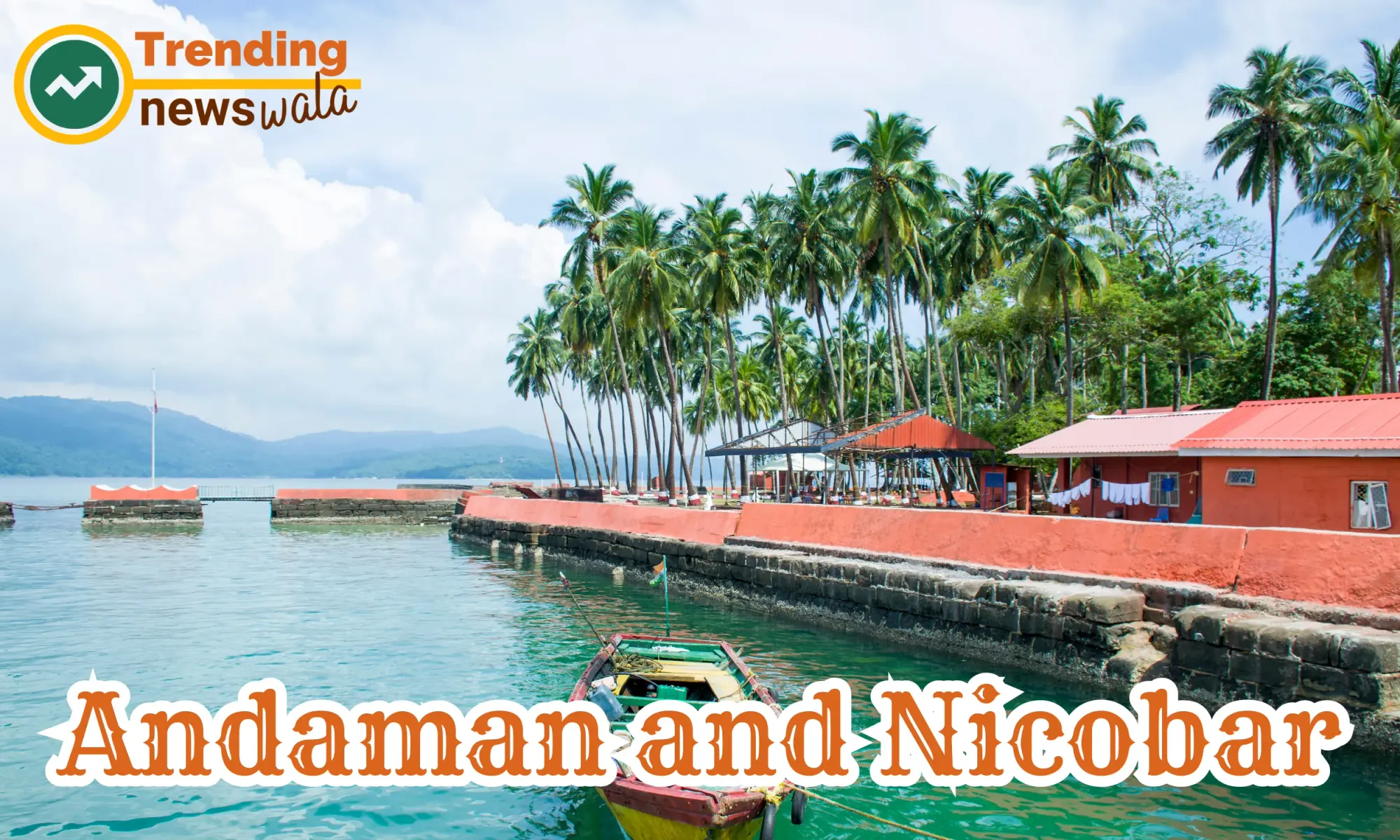
The Andaman and Nicobar Islands are a group of islands Romantic Destinations in India located in the southeastern part of the Bay of Bengal, roughly 1,400 kilometers (870 miles) from the east coast of the Indian subcontinent. This Union Territory of India is known for its stunning natural beauty, diverse marine life, and a mix of indigenous and colonial history. Comprising a total of 572 islands, only a few are open to tourists.
- Geography and Location: The Andaman and Nicobar Islands are situated between the Andaman Sea to the west and the Bay of Bengal to the east. They are closer to Thailand and Myanmar than to mainland India. The archipelago is divided into two groups: the Andaman Islands to the north and the Nicobar Islands to the south.
- Capital: The capital of the Andaman and Nicobar Islands is Port Blair, located on South Andaman Island. It serves as the administrative headquarters and the primary entry point for tourists.
- Biodiversity: The islands are known for their rich biodiversity, both on land and underwater. The lush tropical forests are home to a variety of flora and fauna, including endemic species. The surrounding coral reefs contribute to the islands' status as a biodiversity hotspot.
- Indigenous Tribes: The Andaman and Nicobar Islands are inhabited by various indigenous tribes, some of whom have had minimal contact with the outside world. The Jarawa, Sentinalese, Great Andamanese, Nicobarese, and others contribute to the cultural diversity of the islands. The Indian government has implemented policies to protect the rights and well-being of these tribes.
- Historical Significance: The islands have a significant historical legacy, including being used as a penal colony by the British during the colonial era. Cellular Jail in Port Blair, also known as Kala Pani, served as a prison for Indian political prisoners. The jail is now a national memorial and museum.
- Water Sports and Adventure: The Andaman and Nicobar Islands are a paradise for water sports enthusiasts. Activities such as snorkeling, scuba diving, sea walking, and parasailing are popular due to the clear turquoise waters and vibrant coral reefs. Havelock Island, Neil Island, and North Bay Island are renowned for their underwater activities.
- Radhanagar Beach: Radhanagar Beach on Havelock Island is frequently listed among the best beaches in Asia. Its pristine white sands, crystal-clear waters, and breathtaking sunsets make it a favorite among tourists.
- Ross and Smith Islands: Connected by a natural sandbar, Ross and Smith Islands in North Andaman are known for their unique geography. Visitors can walk from one island to the other during low tide, providing a memorable experience.
- Baratang Island: Baratang Island is famous for its limestone caves and mud volcanoes. The journey to the caves involves a boat ride through dense mangrove forests, offering a unique and adventurous experience.
- Diving and Snorkeling Sites: The Andaman Islands boast some of the best diving and snorkeling sites in the world. Popular sites include Mahatma Gandhi Marine National Park, Wandoor, and Cinque Island, where divers can explore vibrant coral reefs and encounter diverse marine life.
- Mahatma Gandhi Marine National Park: This national park, situated near Wandoor, is a protected area comprising several islands and coral reefs. It is home to a variety of marine species, making it an excellent spot for snorkeling and glass-bottom boat rides.
- Cinque Island: Cinque Island is known for its pristine coral reefs, clear waters, and vibrant marine life. It is a popular destination for scuba diving, providing an opportunity to explore the underwater beauty of the Andaman Sea.
- Jarawa Reserve: The Jarawa Reserve is established to protect the Jarawa tribe, who live in the dense forests of Middle and South Andaman Islands. Access to this area is restricted to protect the tribe's privacy and well-being.
The Andaman and Nicobar Islands offer a unique blend of natural beauty, cultural diversity, and historical significance. Whether it's exploring underwater ecosystems, relaxing on pristine beaches, or learning about the indigenous tribes, the islands provide a diverse range of experiences for travelers seeking a tropical paradise.
Coorg, Karnataka
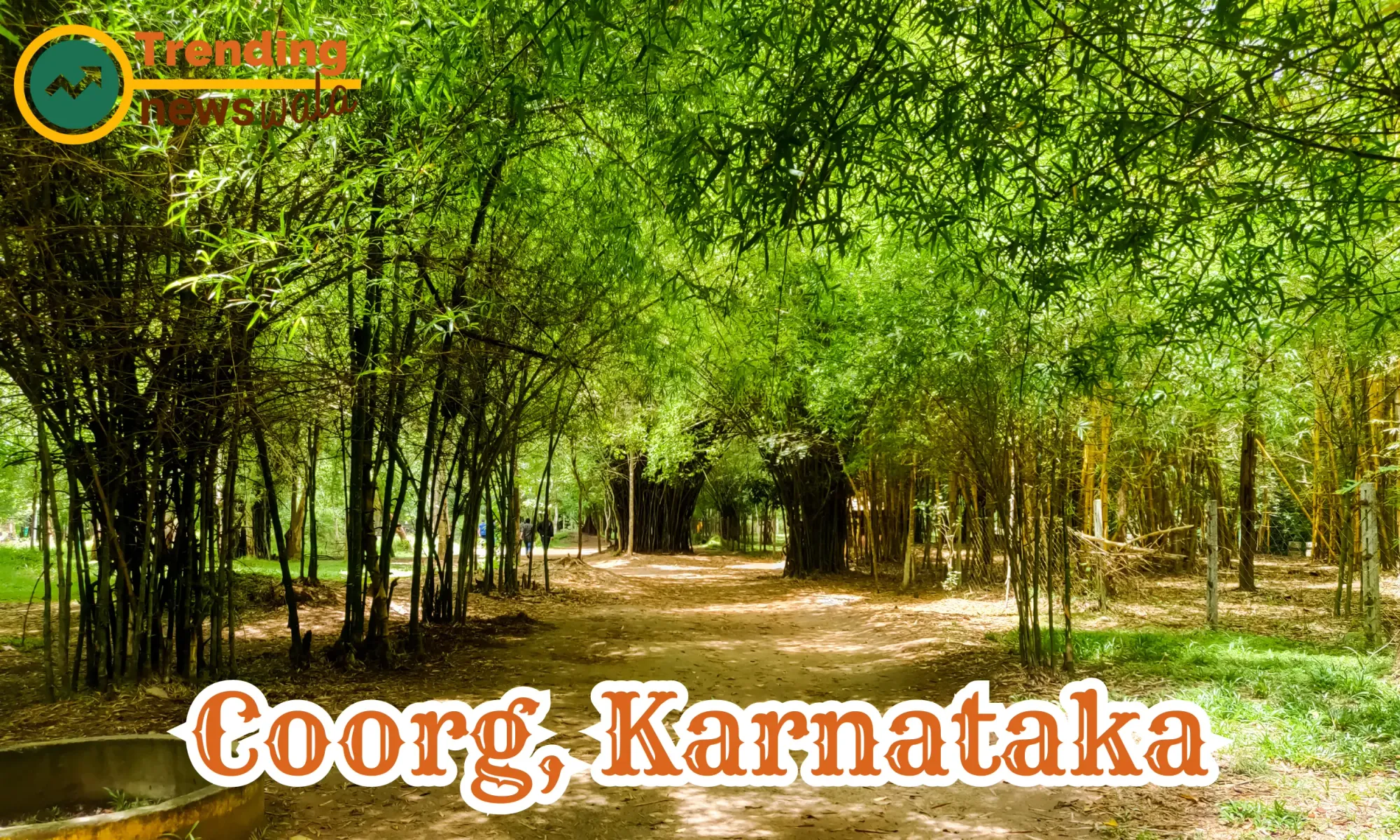
Coorg, officially known as Kodagu, is a picturesque hill station located in the state of Karnataka in southern India. Known for its lush green landscapes, mist-covered hills, coffee plantations, and a cool climate, Coorg is a popular destination for nature lovers, adventure enthusiasts, and those seeking a peaceful retreat.
- Geography and Location: Coorg is situated in the Western Ghats, a mountain range along the western coast of India. It is approximately 270 kilometers (170 miles) southwest of Bangalore, the capital city of Karnataka. The region is characterized by its hilly terrain, dense forests, and numerous water bodies.
- Climate: Coorg enjoys a moderate climate throughout the year, making it a popular destination for visitors seeking relief from the heat. The temperatures remain relatively cool, with pleasant weather even during the summer months. The monsoon season brings heavy rainfall, enhancing the region's greenery.
- Coffee Plantations: Coorg is renowned for its extensive coffee plantations that contribute significantly to India's coffee production. The landscape is dotted with lush coffee estates, and visitors have the opportunity to tour plantations, learn about the coffee-making process, and enjoy scenic walks through the fields.
- Madikeri: Madikeri, the district headquarters of Coorg, is a charming town surrounded by hills and valleys. The town is known for its colonial architecture, bustling markets, and the Raja's Seat, a viewpoint offering panoramic views of the surrounding hills.
- Abbey Falls: Abbey Falls, located near Madikeri, is a popular tourist attraction. The waterfall cascades down from a height amidst dense coffee plantations and spice estates, creating a scenic and tranquil atmosphere. A hanging bridge near the falls provides a closer view.
- Namdroling Monastery (Golden Temple): Located in the town of Bylakuppe, the Namdroling Monastery is one of the largest Tibetan Buddhist monasteries in India. Also known as the Golden Temple, it features stunning architecture, intricate murals, and vibrant prayer flags. The monastery is a serene place for spiritual reflection.
- Talakaveri: Talakaveri is considered the source of the River Kaveri, one of the major rivers in South India. It is situated atop Brahmagiri Hill and offers breathtaking views of the surrounding Western Ghats. A temple dedicated to Goddess Kaveri is also present at the site.
- Raja's Seat: Raja's Seat is a popular viewpoint in Madikeri, known for its well-maintained gardens and stunning sunset views. The place was once a favorite recreational spot for the kings of Kodagu.
- Dubare Elephant Camp: Situated on the banks of the Kaveri River, the Dubare Elephant Camp is an elephant training center where visitors can interact with elephants, participate in activities like bathing them, and learn about their conservation.
- Trekking and Adventure: Coorg offers several trekking trails that lead through the Western Ghats, providing adventure enthusiasts with opportunities to explore the region's diverse flora and fauna. Tadiandamol, the highest peak in Coorg, is a popular trekking destination.
- Cauvery Nisargadhama: Cauvery Nisargadhama is an island formed by the River Cauvery, accessible by a hanging bridge. The island is covered with bamboo groves and teak trees, offering a peaceful environment for nature walks and relaxation.
- Homestays: Coorg is known for its warm hospitality, and many visitors opt to stay in traditional homestays hosted by local families. This provides an opportunity to experience the local culture, savor traditional Kodava cuisine, and enjoy the serene surroundings.
Coorg's natural beauty, coupled with its cultural richness and outdoor activities, makes it an ideal destination for those seeking a refreshing escape in the lap of nature. Whether exploring coffee plantations, trekking through hills, or simply enjoying the tranquility, Coorg offers a diverse range of experiences for every type of traveler.
Rishikesh, Uttarakhand
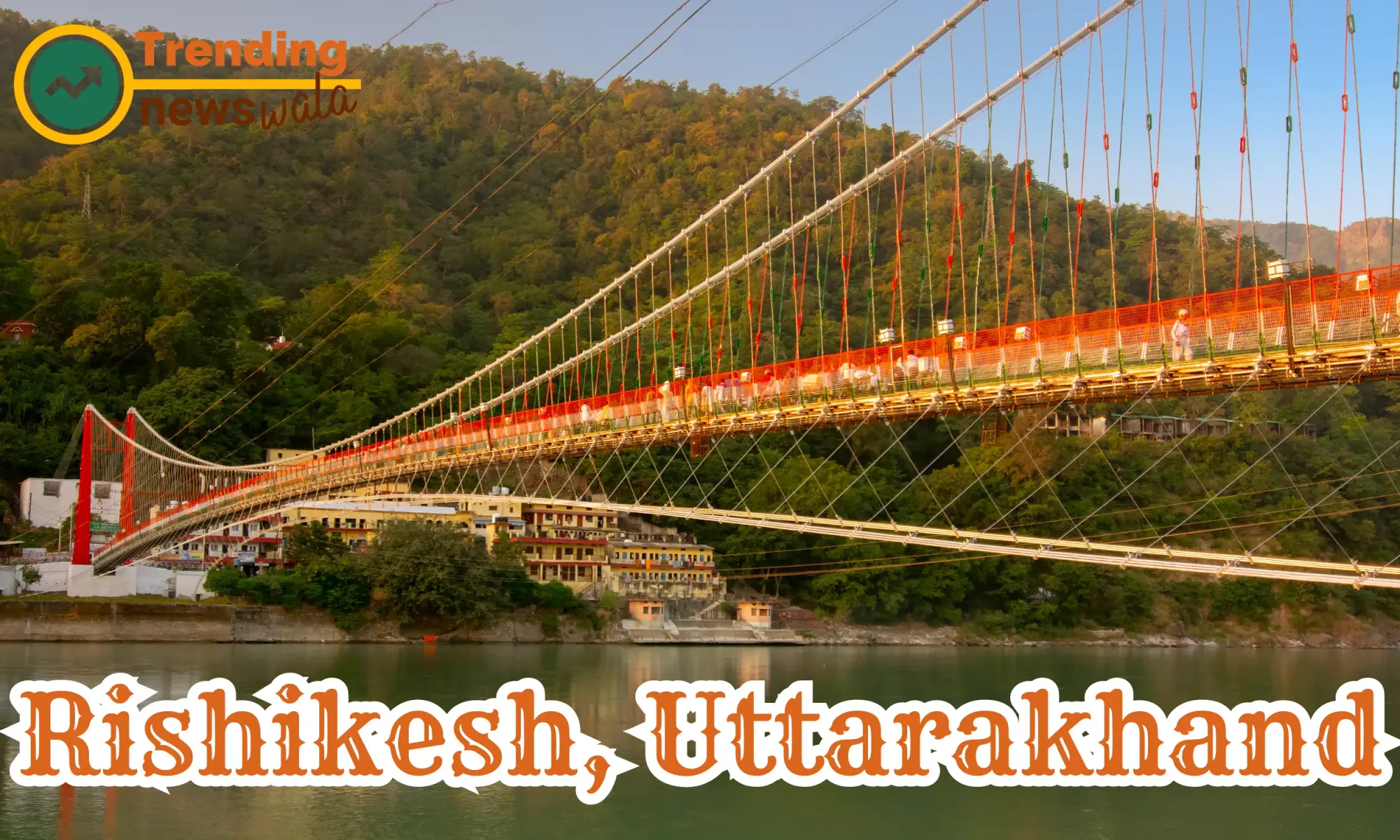
Rishikesh, nestled in the foothills of the Himalayas in the northern state of Uttarakhand, India, is a serene town renowned for its spiritual significance, natural beauty, and adventure sports. Situated on the banks of the holy Ganges River, Rishikesh serves as a gateway to the Garhwal Himalayas and is considered one of the holiest places in India.
- Spiritual Hub: Rishikesh is revered as a center for yoga, meditation, and spirituality. It attracts seekers and devotees from around the world who come to practice yoga, attend meditation retreats, and immerse themselves in the tranquil ambiance of the town.
- Ganges River: The Ganges, considered sacred by Hindus, flows through Rishikesh, adding to the town's spiritual aura. Devotees take holy dips in the river, perform rituals, and attend evening aarti ceremonies along the ghats (riverfront steps) to pay homage to the river goddess.
- Lakshman Jhula and Ram Jhula: Lakshman Jhula and Ram Jhula are iconic suspension bridges that span the Ganges River and connect different parts of Rishikesh. These bridges offer panoramic views of the river and the surrounding hills and are named after the Hindu epic Ramayana, where they are believed to be associated with Lord Rama's brother, Lakshmana.
- Temples and Ashrams: Rishikesh is dotted with numerous temples and ashrams, each offering a tranquil space for prayer, meditation, and spiritual learning. The Parmarth Niketan Ashram, Sivananda Ashram, and Neelkanth Mahadev Temple are among the most prominent spiritual centers in the town.
- Yoga Capital of the World: Rishikesh is often referred to as the "Yoga Capital of the World" due to its association with yoga and spiritual practices. The town hosts several yoga schools and ashrams where visitors can enroll in yoga teacher training courses, workshops, and retreats conducted by experienced instructors.
- Adventure Sports: Rishikesh is a paradise for adventure enthusiasts, offering a wide range of adrenaline-pumping activities. White water rafting on the Ganges is a popular adventure sport, along with bungee jumping, cliff jumping, zip-lining, and trekking in the nearby Himalayan foothills.
- Beatles Ashram (Maharishi Mahesh Yogi Ashram): The Beatles Ashram gained fame when the iconic band, The Beatles, visited Rishikesh in 1968 to study transcendental meditation with Maharishi Mahesh Yogi. The ashram is now abandoned but serves as a popular tourist attraction adorned with colorful graffiti and murals.
- Neer Garh Waterfall: Neer Garh Waterfall, located a short distance from Rishikesh, is a scenic cascade surrounded by lush greenery. Visitors can trek through the forest to reach the waterfall and enjoy a refreshing dip in the natural pool.
- Neelkanth Mahadev Temple: Neelkanth Mahadev Temple, dedicated to Lord Shiva, is situated amidst the dense forests of the Garhwal Himalayas, about 12 kilometers from Rishikesh. The temple is a significant pilgrimage site and attracts devotees who undertake a challenging trek to seek the blessings of Lord Shiva.
- Rajaji National Park: Rajaji National Park, located near Rishikesh, is a haven for wildlife enthusiasts and nature lovers. The park is home to diverse flora and fauna, including elephants, tigers, leopards, and various species of birds. Visitors can explore the park through jeep safaris, elephant rides, and nature walks.
Rishikesh's unique blend of spirituality, adventure, and natural beauty makes it a captivating destination for travelers seeking a transformative experience. Whether it's practicing yoga by the riverside, embarking on thrilling outdoor adventures, or exploring the town's spiritual heritage, Rishikesh offers something for everyone amidst the serene backdrop of the Himalayas.
Khajuraho, Madhya Pradesh
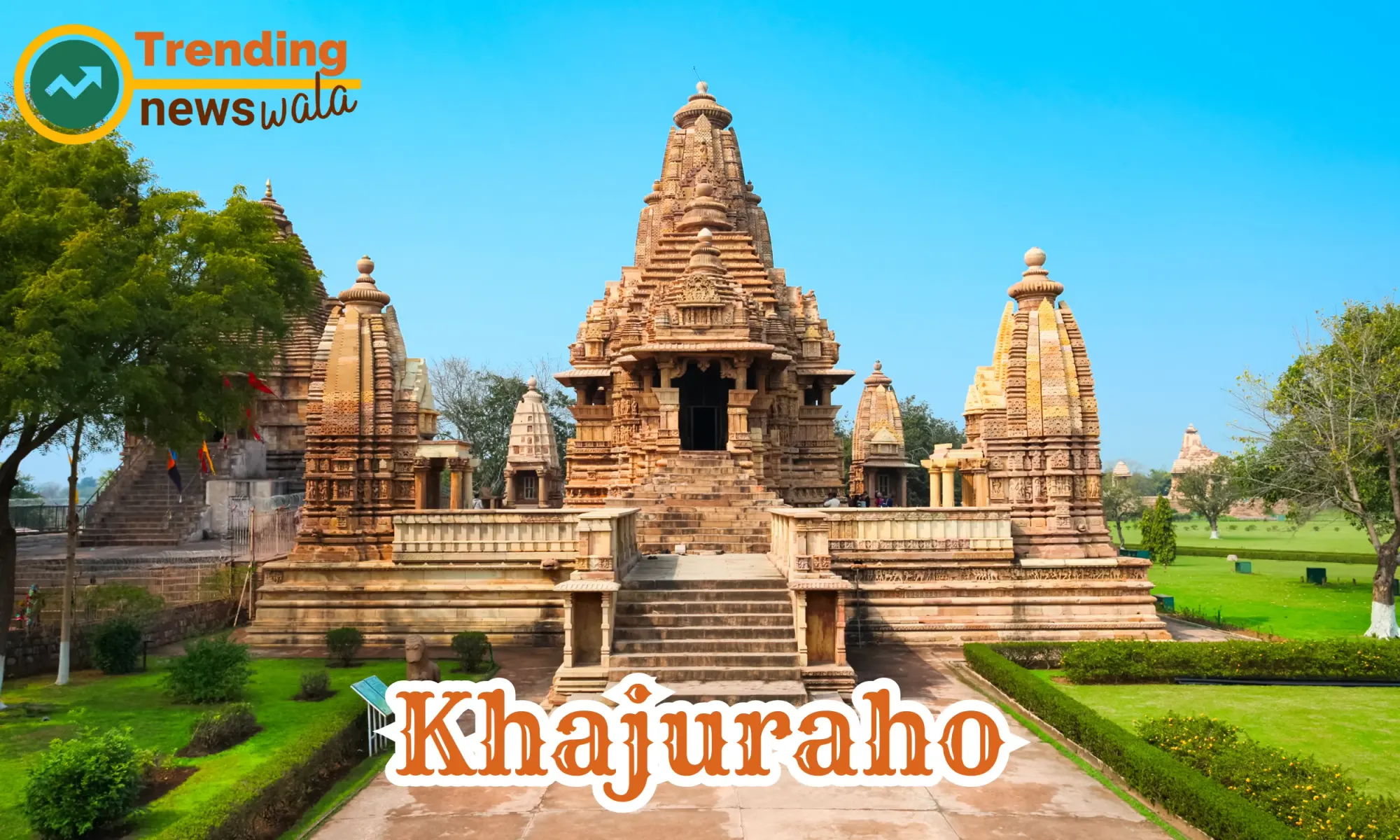
Khajuraho, located in the Chhatarpur district of Madhya Pradesh, India, is a UNESCO World Heritage Site known for its stunning group of temples adorned with intricate and explicit erotic sculptures. These temples, built between 950 and 1150 AD by the Chandela dynasty, showcase a unique blend of architectural brilliance, artistic excellence, and cultural significance. Khajuraho is often considered one of the most important archaeological and historical sites in India.
- Architectural Marvel: The Khajuraho Group of Monuments comprises a total of 20 temples, of which only a group of 22 temples have survived the test of time. These temples are renowned for their exquisite architecture, intricate carvings, and detailed sculptures that depict various aspects of life, mythology, and spirituality.
- Erotic Sculptures: The most distinctive feature of Khajuraho temples is the depiction of erotic art on some of the temple walls. These sculptures are intricately carved and showcase a celebration of love, sensuality, and the human form. While the erotic art is prominent, it is just a small part of the overall temple carvings, which also include depictions of gods, goddesses, animals, and everyday life.
- Temple Groups: The Khajuraho temples are broadly divided into three groups: the Western Group, Eastern Group, and Southern Group. The Western Group, which includes the Kandariya Mahadeva Temple and Lakshmana Temple, is the most famous and attracts the majority of visitors.
- Western Group of Temples: The Western Group of Temples in Khajuraho is the largest and most well-preserved. Some of the prominent temples in this group include the Kandariya Mahadeva Temple, Devi Jagadambi Temple, Chitragupta Temple, and Lakshmana Temple. The Kandariya Mahadeva Temple is particularly celebrated for its intricate carvings and sculptures.
- Lakshmana Temple: The Lakshmana Temple is one of the masterpieces of Khajuraho. Dedicated to Lord Vishnu, it features a richly carved sanctum, a pyramidal tower, and an intricately designed main hall.
- Kandariya Mahadeva Temple: The Kandariya Mahadeva Temple is the largest and most ornate temple in Khajuraho. It is dedicated to Lord Shiva and is known for its detailed carvings, including erotic sculptures that adorn the outer walls.
- Chausath Yogini Temple: The Chausath Yogini Temple is the oldest surviving temple in Khajuraho and is dedicated to the goddess Kali. It is characterized by its circular design and open courtyard.
- Sound and Light Show: Khajuraho hosts a Sound and Light Show in the temple complex, narrating the history and legends associated with the temples. The show is conducted in the evening and provides an immersive experience.
- Khajuraho Dance Festival: The Khajuraho Dance Festival, held annually in February, showcases classical Indian dance forms against the backdrop of the temples. Renowned dancers from across the country participate, adding a cultural dimension to the site.
- Khajuraho Group of Monuments Museum: The museum near the Western Group of Temples houses sculptures and artifacts from the temples, providing additional insights into the art and history of Khajuraho.
- Matangeshwar Temple: The Matangeshwar Temple, dedicated to Lord Shiva, is an active temple located in the Western Group. It is known for its imposing architecture and a large idol of Lord Shiva.
- Panna National Park: Panna National Park, known for its wildlife and biodiversity, is located near Khajuraho. It provides an opportunity for wildlife enthusiasts to explore and spot various species, including tigers, leopards, and deer.
Khajuraho, with its exquisite temples and rich cultural heritage, attracts tourists, historians, and art enthusiasts from around the world. The intricate carvings, architectural grandeur, and the cultural events held at the site make Khajuraho a destination that beautifully blends history, art, and spirituality.
Ooty, Tamil Nadu
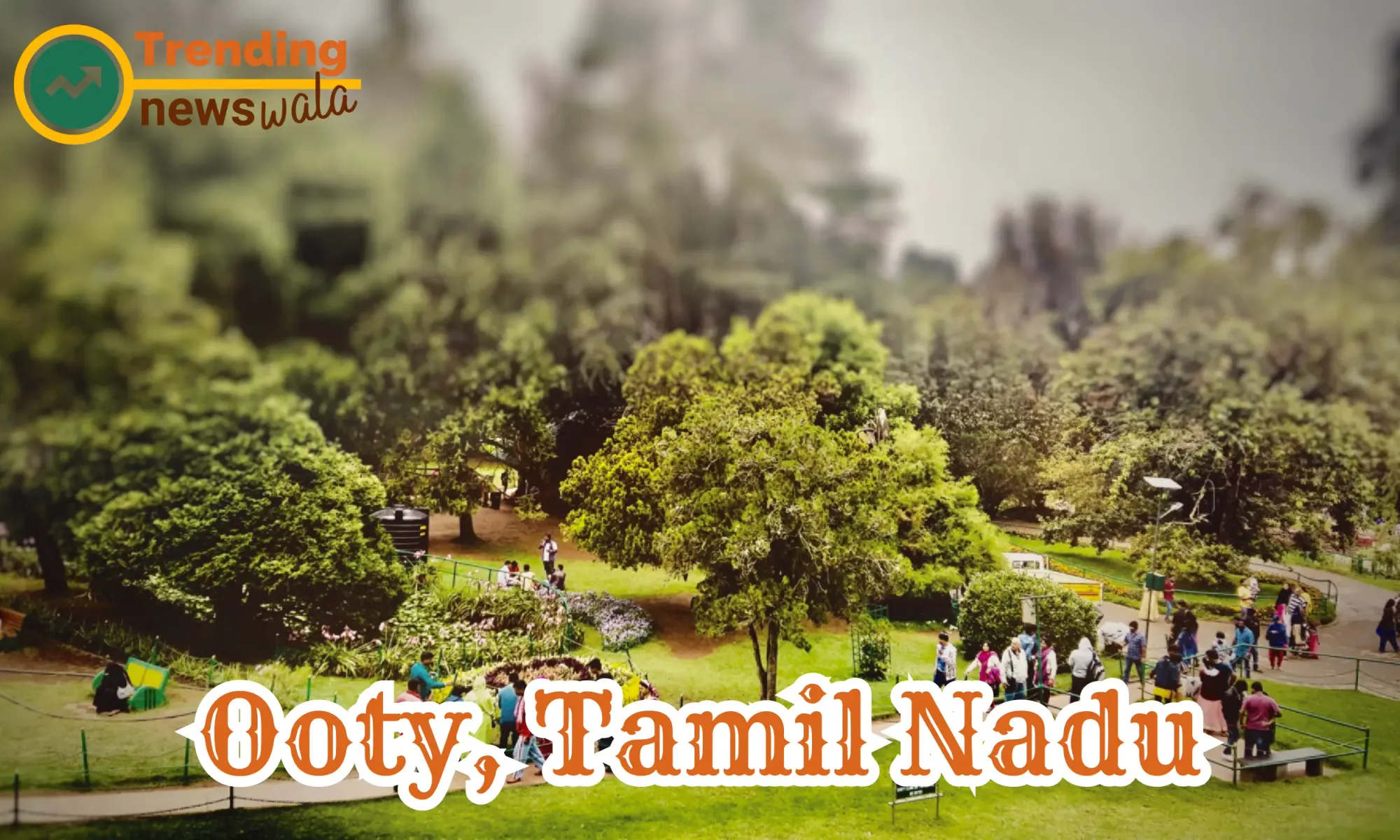
Ooty, officially known as Udhagamandalam, is a popular hill station located in the Nilgiri Hills of the Western Ghats in Tamil Nadu, India. Renowned for its pleasant climate, lush green landscapes, and colonial charm, Ooty has been a favorite retreat for travelers seeking a serene and picturesque getaway.
- Geography and Location: Ooty is situated at an altitude of approximately 2,240 meters (7,350 feet) above sea level, making it one of the highest hill stations in South India. It is part of the Nilgiri Biosphere Reserve, known for its rich biodiversity.
- Climate: Ooty enjoys a cool and temperate climate throughout the year, with temperatures rarely exceeding 25 degrees Celsius (77 degrees Fahrenheit) during the summer months. The town experiences a monsoon season, bringing lush greenery to the surrounding hills.
- Botanical Gardens: The Government Botanical Gardens in Ooty is a well-maintained garden spread over 55 acres. It houses a vast collection of exotic plants, flowers, and trees. The garden features a fossilized tree trunk, a monkey puzzle tree, and an Italian-style garden.
- Ooty Lake: Ooty Lake is a scenic artificial lake surrounded by eucalyptus trees and lush landscapes. Visitors can enjoy boat rides on the lake, providing breathtaking views of the hills and the Ooty town.
- Nilgiri Mountain Railway: The Nilgiri Mountain Railway, a UNESCO World Heritage Site, connects Ooty to the town of Mettupalayam. The toy train journey on this narrow-gauge railway offers spectacular views of the Nilgiri Hills, tea gardens, and dense forests.
- Doddabetta Peak: Doddabetta is the highest peak in the Nilgiri Hills and offers panoramic views of the surrounding hills and plains. A telescope house at the peak allows visitors to get a closer look at the stunning landscapes.
- Rose Garden: Ooty Rose Garden, also known as the Centenary Rose Park, is one of the largest rose gardens in India. It features a vast variety of roses and is a colorful and fragrant attraction for visitors.
- Tea Gardens and Estates: Ooty is surrounded by tea plantations and estates, contributing to the region's economy. Visitors can take guided tours of tea factories, learn about the tea-making process, and enjoy picturesque views of the tea gardens.
- St. Stephen's Church: St. Stephen's Church, built in the 19th century, is one of the oldest churches in the Nilgiris. The church's stained glass windows and Gothic architecture add to its historical and architectural significance.
- Ooty Tribal Research Center: The Tribal Research Center in Ooty provides insights into the culture, traditions, and lifestyle of the indigenous tribes of the Nilgiris. It showcases artifacts, tools, and exhibits related to the tribes in the region.
- Nilgiri Dairy Farm: The Nilgiri Dairy Farm in Ooty is known for its fresh dairy products, including chocolates, cheese, and a variety of dairy treats. The farm's outlet is a popular spot for visitors looking to sample and purchase local dairy products.
- Shopping at Charring Cross: Charring Cross is a bustling market area in Ooty where visitors can shop for local handicrafts, souvenirs, woolens, and tea. The market comes alive with vibrant shops and street vendors.
- Ooty Rose Show: The annual Ooty Rose Show, held in May, showcases a stunning display of roses from various parts of the country. The event attracts horticulturists, flower enthusiasts, and tourists.
Ooty's picturesque landscapes, colonial architecture, and a variety of attractions make it a sought-after destination for nature lovers, adventure seekers, and those seeking a peaceful escape from city life. The town's blend of natural beauty, cultural heritage, and pleasant weather contributes to its enduring popularity among tourists.
Jaisalmer, Rajasthan

Jaisalmer, often referred to as the "Golden City," is a historic city located in the western Indian state of Rajasthan. Nestled in the heart of the Thar Desert, Jaisalmer is renowned for its majestic forts, intricately carved havelis, and a distinct golden-yellow sandstone architecture that gives the city its characteristic hue.
- Golden Fort - Jaisalmer Fort: The centerpiece of Jaisalmer is the Jaisalmer Fort, also known as Sonar Quila or the Golden Fort. This massive fort is one of the largest fully preserved fortified cities in the world and a UNESCO World Heritage Site. The fort's yellow sandstone walls take on a golden hue during the day, giving the city its nickname.
- Havelis: Jaisalmer is home to several ornate havelis (traditional Indian mansions) that showcase exquisite architecture and intricate carvings. Some notable havelis include Patwon Ki Haveli, Salim Singh Ki Haveli, and Nathmal Ki Haveli. These structures provide a glimpse into the opulent lifestyle of the wealthy merchants of the bygone era.
- Sam Sand Dunes: Located about 40 kilometers from the city, the Sam Sand Dunes are famous for their mesmerizing sand dunes that stretch as far as the eye can see. Visitors often indulge in camel safaris to explore the desert landscape, experience a sunset on the dunes, and enjoy traditional Rajasthani cultural performances.
- Jain Temples: Jaisalmer boasts a collection of exquisitely carved Jain temples within the Jaisalmer Fort. The temples are dedicated to various Jain Tirthankaras and showcase remarkable architecture and intricate sculptures.
- Gadisar Lake: Gadisar Lake, an artificial reservoir, was constructed around 1400 AD by Maharaja Gadsi Singh. The lake is surrounded by ghats, temples, and cenotaphs, creating a serene atmosphere. Boat rides on the lake offer a peaceful experience.
- Jaisalmer War Museum: The Jaisalmer War Museum is dedicated to showcasing the sacrifices and contributions of the Indian Armed Forces. It displays military equipment, historical artifacts, and information about battles fought in the region.
- Folklore Museum: The Folklore Museum in Jaisalmer provides insights into the traditional art, culture, and lifestyle of the people of Rajasthan. The museum exhibits a diverse collection of artifacts, puppets, musical instruments, and folk art.
- Kuldhara: Kuldhara is an abandoned village near Jaisalmer that has a mysterious and haunting history. According to legend, the village was abandoned overnight by its residents, and it is believed to be haunted. The ruins of Kuldhara are now a popular tourist destination.
- Tanot Mata Temple: Located near the India-Pakistan border, Tanot Mata Temple is a significant pilgrimage site. The temple is known for its association with the Indo-Pakistani War of 1965, where the temple miraculously escaped damage.
- Bada Bagh: Bada Bagh is a historical garden complex containing a series of royal cenotaphs or chhatris. The site offers panoramic views of the surrounding desert landscape and is a peaceful spot to explore.
- Shopping in Jaisalmer: Jaisalmer is a haven for shoppers, offering a vibrant market scene. The Sadar Bazaar is known for its handicrafts, textiles, jewelry, and traditional Rajasthani items. The market is a great place to buy souvenirs and immerse oneself in the local culture.
- Jaisalmer Desert Festival: The Jaisalmer Desert Festival is an annual event showcasing the rich cultural heritage of the region. The festival features folk music, dance performances, camel races, and competitions. It attracts tourists from around the world.
Jaisalmer's timeless charm, architectural marvels, and cultural richness make it a captivating destination that transports visitors to a bygone era. Whether exploring the intricacies of the Golden Fort, riding camels on the sand dunes, or wandering through the enchanting havelis, Jaisalmer offers a unique and unforgettable experience in the heart of the Thar Desert.
Manali, Himachal Pradesh
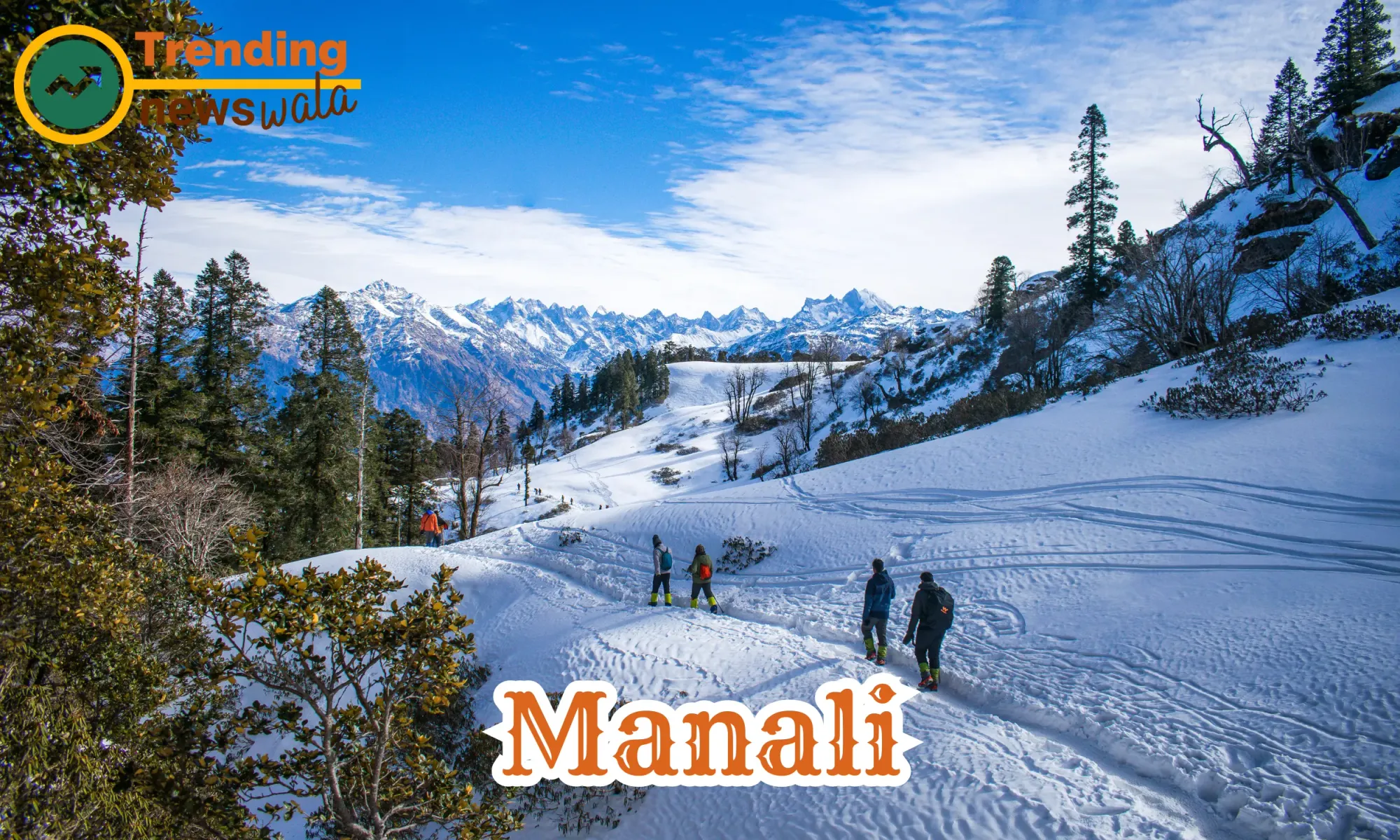
Manali, located in the Kullu Valley of Himachal Pradesh, India, is a popular hill station and tourist destination known for its breathtaking landscapes, adventure activities, and vibrant culture. Nestled in the Pir Panjal and Dhauladhar ranges of the Himalayas, Manali offers a perfect blend of natural beauty and cultural richness.
- Geography and Location: Manali is situated at an altitude of approximately 2,050 meters (6,726 feet) above sea level in the Beas River Valley. It is surrounded by snow-capped mountains, dense forests, and meandering rivers, making it a picturesque destination.
- Lush Green Valleys: The Kullu Valley, where Manali is located, is known for its lush greenery and apple orchards. The Beas River flows through the valley, adding to the scenic beauty of the region.
- Adventure Sports: Manali is a hub for adventure enthusiasts, offering a variety of activities. Popular adventure sports include paragliding, skiing, snowboarding, trekking, river rafting, and mountain biking. Solang Valley, just a short drive from Manali, is a hotspot for many of these activities.
- Rohtang Pass: Rohtang Pass, situated at an altitude of over 3,900 meters (12,800 feet), is a high mountain pass that connects Manali to Lahaul and Spiti Valleys. The pass is known for its panoramic views of the surrounding mountains and is a gateway to the Lahaul Valley.
- Old Manali: Old Manali is a charming area with narrow lanes, traditional houses, and a relaxed ambiance. It is known for its bohemian vibe, vibrant cafes, and the Manu Temple dedicated to the sage Manu.
- Hadimba Devi Temple: The Hadimba Devi Temple is a prominent temple in Manali dedicated to Hadimba, the wife of Bhima from the Mahabharata. The temple is surrounded by cedar forests and features intricate wooden carvings.
- Manu Temple: The Manu Temple, located in Old Manali, is dedicated to the sage Manu, considered the progenitor of humanity in Hindu mythology. The temple's architecture and serene surroundings make it a significant religious site.
- Mall Road: The Mall Road in Manali is a bustling street lined with shops, restaurants, and cafes. It is a popular place for shopping, dining, and experiencing the local culture. The street is often filled with tourists exploring the market and enjoying the scenic views.
- Nehru Kund: Nehru Kund is a natural spring named after India's first Prime Minister, Jawaharlal Nehru. It is located on the way to Leh and serves as a popular spot for travelers to take a break and enjoy the fresh mountain spring water.
- Vashisht Hot Water Springs: Vashisht, a small village near Manali, is famous for its natural hot water springs. The Vashisht Temple and the hot water baths are popular among tourists seeking relaxation and a therapeutic experience.
- Great Himalayan National Park: The Great Himalayan National Park, a UNESCO World Heritage Site, is located near Manali. It is known for its diverse flora and fauna, including Himalayan tahr, musk deer, and various species of pheasants. Trekking trails in the park offer a chance to explore its pristine wilderness.
- Jogini Falls: Jogini Falls, a short trek from Vashisht, is a picturesque waterfall surrounded by lush greenery. The trek to Jogini Falls provides stunning views of the valley and is a refreshing experience.
- Local Cuisine: Manali offers a variety of local Himachali cuisine. Visitors can savor traditional dishes like Sidu, Thenthuk, and Sidu. Apples and other fresh fruits from the orchards are also popular.
Whether it's the thrill of adventure sports, the tranquility of nature, or the charm of its cultural heritage, Manali captivates visitors with its diverse offerings. The town serves as a gateway to the higher reaches of the Himalayas and continues to be a favorite destination for travelers seeking a perfect blend of adventure and relaxation.
Munnar, Kerala
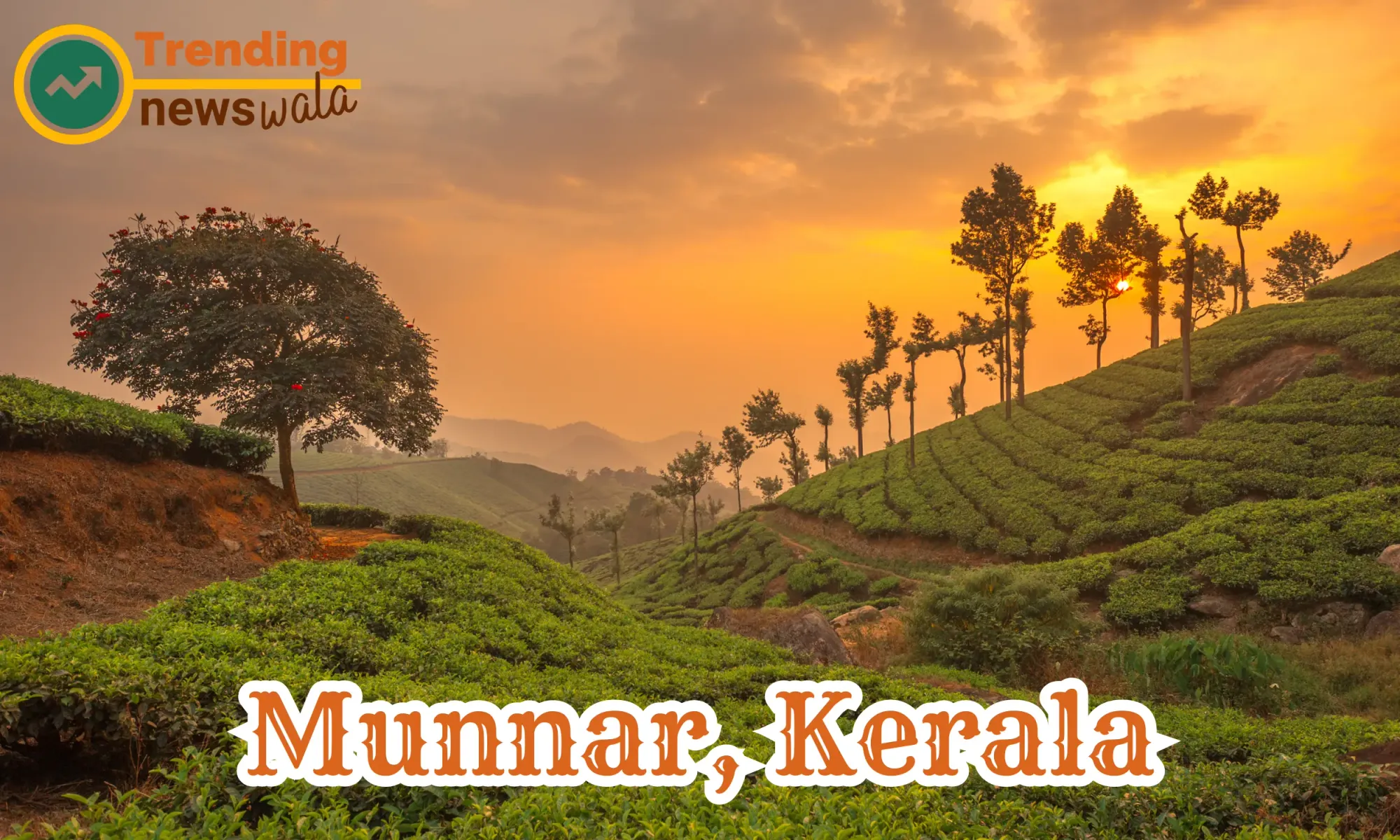
Munnar, located in the Western Ghats of Kerala, India, is a picturesque hill station renowned for its lush tea plantations, verdant landscapes, and serene ambiance. Situated at an altitude of approximately 1,600 meters (5,200 feet) above sea level, Munnar is known for its pleasant climate, breathtaking views, and diverse flora and fauna.
- Tea Plantations: Munnar is synonymous with sprawling tea estates that cover the hillsides like a green carpet. The region is one of the largest tea producers in India. Visitors can explore tea plantations, learn about the tea-making process, and enjoy panoramic views of the neatly manicured fields.
- Eravikulam National Park: Eravikulam National Park, a UNESCO World Heritage Site, is home to the endangered Nilgiri Tahr. The park's undulating landscapes, grasslands, and shola forests create a unique ecosystem. The park is also famous for the blooming of Neelakurinji flowers once every twelve years.
- Mattupetty Dam and Lake: Mattupetty Dam, surrounded by lush greenery, is a popular attraction in Munnar. The dam creates the stunning Mattupetty Lake, offering boat rides with breathtaking views of the surrounding hills and tea plantations.
- Anamudi Peak: Anamudi is the highest peak in South India, located in the Eravikulam National Park. Although trekking to the summit is restricted, the surrounding areas offer fantastic trekking opportunities, and the peak itself provides stunning views.
- Tea Museum: The Tea Museum in Munnar provides insights into the history of tea plantations in the region. Visitors can learn about the tea-making process, the evolution of tea production, and witness vintage tea-processing equipment.
- Attukal Waterfalls: Attukal Waterfalls, surrounded by dense forests and hills, is a serene spot near Munnar. The cascading water, coupled with the lush greenery, makes it a popular destination for nature lovers and trekkers.
- Pothamedu Viewpoint: Pothamedu Viewpoint offers panoramic views of the tea, coffee, and cardamom plantations that cover the hills of Munnar. The viewpoint is an ideal spot to witness stunning sunsets and capture the beauty of the landscape.
- Top Station: Top Station, located at the border of Kerala and Tamil Nadu, offers spectacular views of the Western Ghats. It is named so because it was once the top station for the Kundala Valley Railway.
- Rose Gardens: Munnar is home to beautiful rose gardens that showcase a variety of roses and other exotic flowers. The gardens are a peaceful retreat, providing a colorful and fragrant experience.
- Chinnar Wildlife Sanctuary: Chinnar Wildlife Sanctuary, located near Munnar, is known for its diverse flora and fauna. It is a haven for wildlife enthusiasts and nature lovers, with species like the Indian elephant, spotted deer, and grizzled giant squirrel.
- Marayoor Dolmens: Marayoor is known for its ancient dolmens, which are prehistoric burial chambers made of large stones. These dolmens provide a glimpse into the region's historical and archaeological significance.
- Kundala Dam: Kundala Dam, surrounded by lush greenery, is another scenic spot near Munnar. The dam offers boating facilities, and the area is known for its picturesque landscapes.
- Cuisine: Munnar offers a variety of culinary delights, including local Kerala cuisine. Visitors can savor dishes like appam with stew, Kerala parotta, and seafood specialties.
Munnar's serene landscapes, tea-covered hills, and biodiversity make it a sought-after destination for nature lovers and those seeking a tranquil escape. Whether trekking through the Western Ghats, exploring tea estates, or enjoying the tranquility of its lakes and waterfalls, Munnar offers a rejuvenating experience in the lap of nature.
Pondicherry
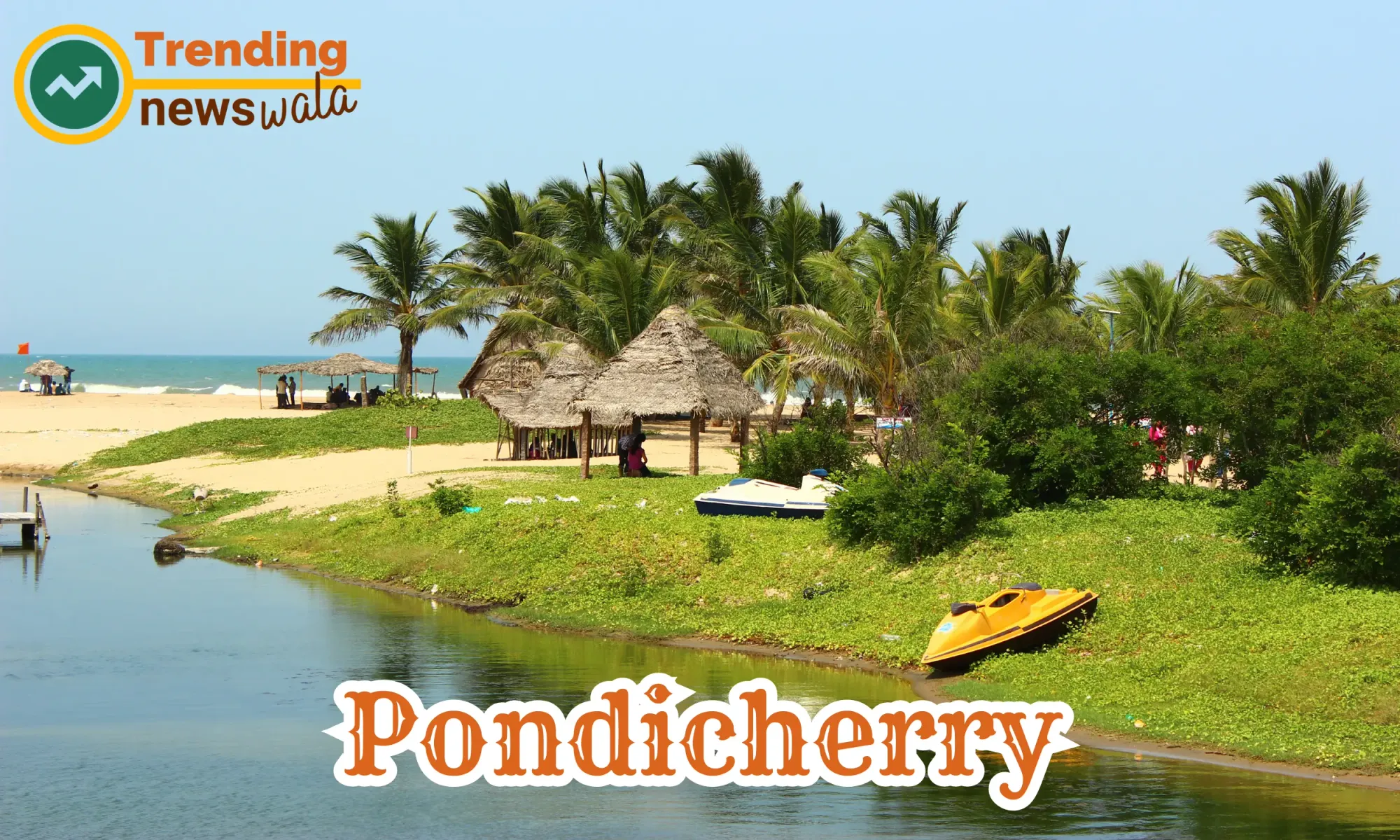
Pondicherry, officially known as Puducherry, is a Union Territory in India, located on the southeastern coast of the country. It is known for its unique blend of French and Indian cultures, evident in its architecture, cuisine, and lifestyle.
- History: Pondicherry has a rich history that reflects its colonial past. The region was a French colony until it was integrated into the Indian Union in 1954. The French influence is still visible in the well-preserved architecture and the layout of the old town.
- French Quarter (Ville Blanche): The French Quarter, also known as Ville Blanche or White Town, is characterized by its charming streets, vibrant colored buildings with colonial architecture, and tree-lined boulevards. Strolling through this area gives visitors a feel of the French colonial era.
- Promenade Beach: Pondicherry is known for its scenic beaches, and Promenade Beach is one of the most popular. The beach is lined with a picturesque promenade, making it a favorite spot for evening walks and relaxation. The iconic statue of Mahatma Gandhi is located along the promenade.
- Auroville: Auroville, an experimental township, is located just outside Pondicherry. Founded in 1968 by Mirra Alfassa, a disciple of Sri Aurobindo, Auroville aims to be a universal town where people from all over the world live in harmony. The Matrimandir, a golden spherical structure, is the central focal point of Auroville.
- Sri Aurobindo Ashram: The Sri Aurobindo Ashram, established by Sri Aurobindo Ghose and The Mother (Mirra Alfassa), is a spiritual community that attracts devotees and seekers from around the world. The ashram is known for its tranquility and spiritual teachings.
- Manakula Vinayagar Temple: This ancient Hindu temple dedicated to Lord Ganesha is a prominent religious site in Pondicherry. The temple is known for its beautiful architecture and various depictions of Lord Ganesha.
- Botanical Garden: The Botanical Garden in Pondicherry is a peaceful oasis with a diverse collection of plants and trees. The garden, established in 1826, features a musical fountain and an aquarium, making it a popular spot for visitors.
- Aayi Mandapam: Aayi Mandapam is a white monument located in the center of Bharathi Park. It was built in memory of a courtesan named Aayi, and today, it serves as a memorial monument and a public park.
- French War Memorial: The French War Memorial, located on Goubert Avenue, is dedicated to the soldiers who sacrificed their lives during World War I. It is an important landmark and a place for quiet reflection.
- Pondicherry Museum: The Pondicherry Museum showcases the rich history and heritage of the region. It houses a diverse collection of artifacts, sculptures, and archaeological findings, providing insights into Pondicherry's cultural evolution.
- Paradise Beach: Paradise Beach, also known as Plage Paradiso, is a secluded and pristine beach accessible by a short boat ride. The beach offers a serene environment and is an ideal spot for a day of relaxation.
- Cafes and Restaurants: Pondicherry is known for its vibrant culinary scene. The town boasts numerous cafes and restaurants that offer a mix of French, Indian, and international cuisines. The French influence is evident in the pastries, croissants, and French-inspired dishes.
- Shopping in Pondicherry: The markets in Pondicherry offer a variety of goods, including traditional handicrafts, textiles, and handmade products. The Mission Street and Nehru Street areas are popular for shopping.
Pondicherry's unique charm lies in its cultural diversity, historical significance, and the harmonious coexistence of different influences. Whether exploring the French Quarter, meditating at Auroville, or enjoying the tranquility of its beaches, Pondicherry provides a distinctive and enriching experience for visitors.
Darjeeling, West Bengal
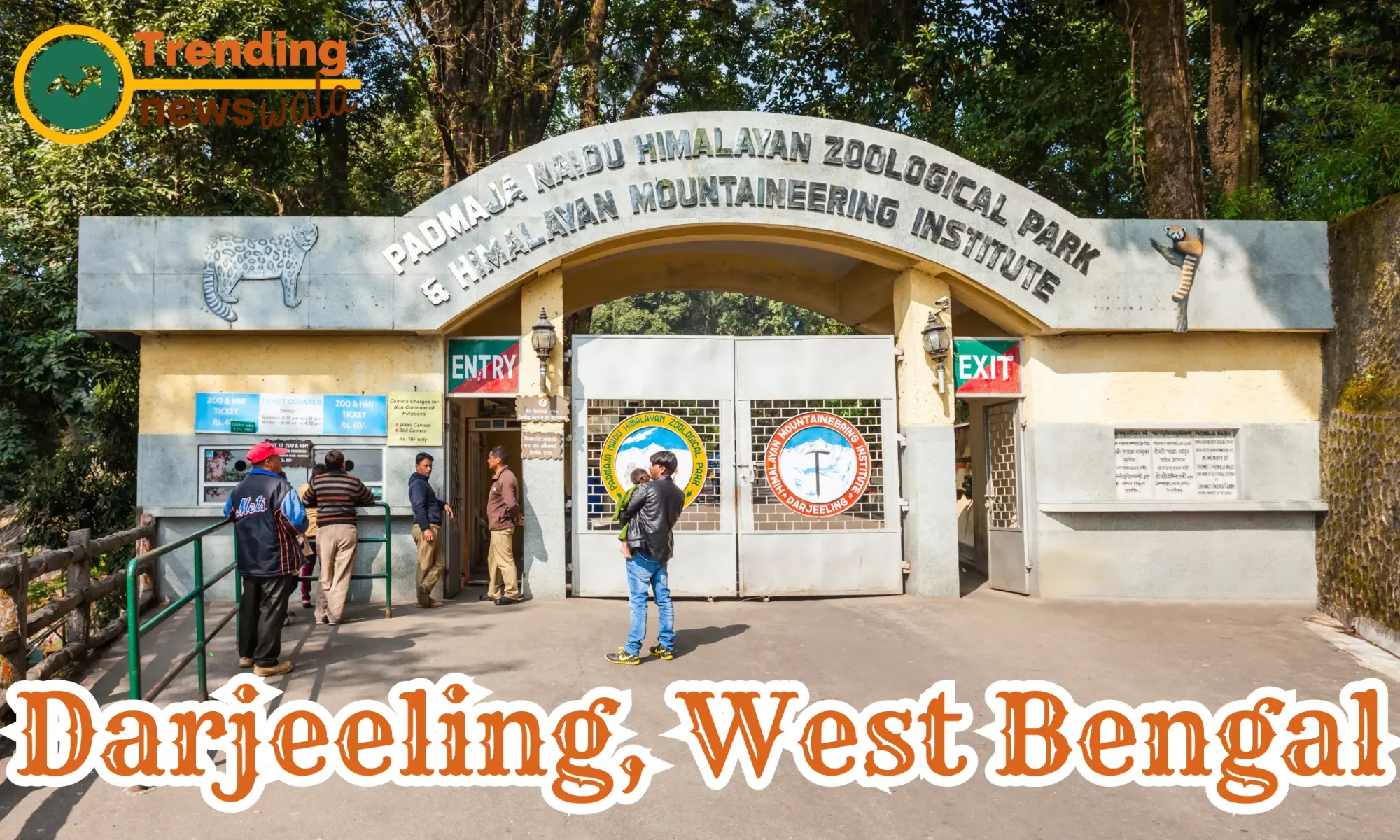
Darjeeling, nestled in the Lesser Himalayas in the Indian state of West Bengal, is a renowned hill station and a popular tourist destination. Famous for its breathtaking landscapes, tea plantations, and the view of the majestic Himalayan peaks, Darjeeling offers a delightful blend of natural beauty, cultural diversity, and colonial charm.
- Geography and Location: Darjeeling is situated at an elevation of approximately 2,042 meters (6,700 feet) above sea level in the northern part of West Bengal. It is surrounded by lush green hills, dense forests, and tea gardens.
- Tea Plantations: Darjeeling is world-famous for its tea, often referred to as "Darjeeling tea." The region's picturesque tea plantations, with their neatly manicured rows of tea bushes, contribute to the global reputation of Darjeeling tea. Visitors can tour the tea estates, learn about the tea-making process, and enjoy tea tastings.
- Darjeeling Himalayan Railway (DHR): The Darjeeling Himalayan Railway, a UNESCO World Heritage Site, is a narrow-gauge railway that winds through the hills and offers stunning views of the surrounding landscapes. The iconic toy train ride from Darjeeling to Ghum is a must-do experience.
- Tiger Hill: Tiger Hill, one of the highest points in Darjeeling, is renowned for its breathtaking sunrise views over the Kanchenjunga range. On clear mornings, the sunrise illuminates the peaks, creating a spectacular panorama that includes Everest and other Himalayan peaks.
- Padmaja Naidu Himalayan Zoological Park: The Padmaja Naidu Himalayan Zoological Park is dedicated to the conservation of Himalayan fauna. It houses the endangered snow leopard, red panda, Himalayan wolf, and several species of Himalayan birds. The park also includes the Himalayan Mountaineering Institute.
- Peace Pagoda: The Japanese Peace Pagoda in Darjeeling is a symbol of peace and spirituality. Located on the slopes of the Jalapahar Hill, the pagoda offers panoramic views of Darjeeling and the surrounding mountains.
- Batasia Loop and War Memorial: The Batasia Loop is a spiral railway track that provides a mesmerizing view of the surrounding hills. It is also home to the Gorkha War Memorial, which honors the Gorkha soldiers who sacrificed their lives in various wars.
- Rock Garden and Ganga Maya Park: The Rock Garden and Ganga Maya Park are beautiful terraced gardens adorned with waterfalls, streams, and sculptures. They provide a peaceful retreat and are ideal for leisurely walks and picnics.
- Observatory Hill and Mahakal Temple: Observatory Hill is a sacred site in Darjeeling, offering panoramic views of the town and the mountains. The Mahakal Temple, dedicated to Lord Shiva, is located at the summit and is an important pilgrimage site.
- Darjeeling Mall Road: The Mall Road in Darjeeling is a bustling market area lined with shops, restaurants, and cafes. It's a popular spot for shopping, where visitors can buy local handicrafts, woolens, and souvenirs.
- Dali Monastery: The Dali Monastery, also known as Druk Thupten Sangag Choling Monastery, is a Buddhist monastery that showcases traditional Tibetan architecture. It offers a tranquil environment for meditation and spiritual reflection.
- Neora Valley National Park: Neora Valley National Park, located near Darjeeling, is known for its diverse flora and fauna. It is a haven for birdwatchers and nature enthusiasts, with a variety of plant species, mammals, and avian life.
- Darjeeling Ropeway: The Darjeeling Ropeway, also known as the Rangeet Valley Passenger Cable Car, provides panoramic views of the tea gardens and the surrounding hills. It is one of the oldest cable car systems in India.
Darjeeling's cool climate, scenic landscapes, and cultural richness make it a favored destination for travelers seeking a peaceful retreat in the lap of the Himalayas. Whether enjoying a ride on the toy train, sipping Darjeeling tea, or admiring the sunrise from Tiger Hill, the town offers a memorable and rejuvenating experience.
Lavasa, Maharashtra
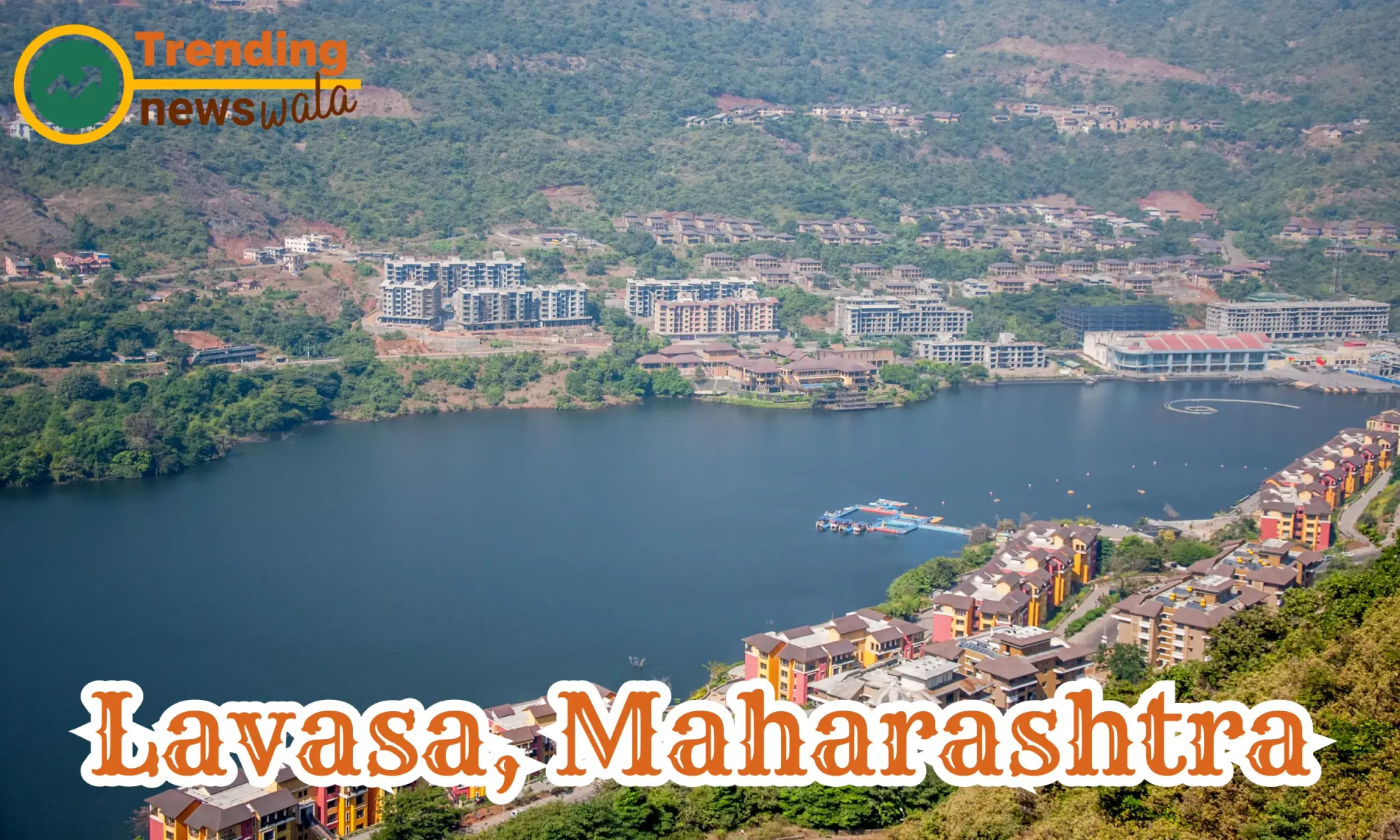
Lavasa is a planned hill station and city located in the Western Ghats of Maharashtra, India. Nestled amidst the Sahyadri mountains, Lavasa is known for its picturesque landscapes, well-designed infrastructure, and serene environment. It was envisioned as a private, planned city with modern amenities, making it a popular destination for weekend getaways and a unique urban experiment.
- Location: Lavasa is situated near Pune, approximately 65 kilometers (40 miles) southwest of the city. The development is spread around the Varasgaon Dam on the Mutha River.
- Planned City Concept: Lavasa was designed as a planned city, inspired by Italian town Portofino. The city planning incorporates modern urban infrastructure, landscaped gardens, and a waterfront, providing a mix of residential, commercial, and recreational spaces.
- Waterfront Promenade: The city features a picturesque waterfront promenade along the Warasgaon Lake. The promenade is lined with cafes, restaurants, and shops, offering a scenic setting for leisurely strolls and relaxation.
- Dasve Viewpoint: Dasve Viewpoint offers panoramic views of the Warasgaon Lake and the surrounding hills. It is a popular spot for photography and enjoying the serene beauty of the region.
- Lakeside Promenade: Lavasa's lakeside promenade is a well-developed area along the lake's shore, featuring walking paths, gardens, and recreational spaces. It provides a tranquil environment for residents and visitors to unwind.
- Adventure Sports: Lavasa offers various adventure sports and outdoor activities, including water sports on the lake, cycling, trekking, and nature trails. The city aims to provide a range of recreational opportunities for residents and tourists alike.
- Temghar Dam: Temghar Dam, located near Lavasa, is another scenic spot known for its reservoir and surrounding hills. It is a popular destination for day trips and picnics.
- Fortune Select Dasve Hotel: Lavasa has a few hotels, and the Fortune Select Dasve Hotel is a prominent one. It offers accommodation, dining, and recreational facilities with a view of the lake.
- Lavasa International Convention Centre (LICC): LICC is a state-of-the-art convention and exhibition center in Lavasa. It hosts events, conferences, and exhibitions, attracting business and leisure travelers.
- Town Hall: The Town Hall in Lavasa is a cultural and recreational hub. It hosts events, performances, and social gatherings, adding to the city's vibrancy.
- Educational Institutions: Lavasa was planned to include educational institutions, and the city has a management institute, Symbiosis Institute of Business Management (SIBM), offering courses in business management.
- Festivals and Events: Lavasa hosts various festivals and events throughout the year, including cultural festivals, music concerts, and sports events. These events contribute to the city's lively atmosphere.
- Accessibility: Lavasa is easily accessible from Pune, making it a popular weekend destination. Visitors can reach Lavasa by road, and the drive itself offers scenic views of the Western Ghats.
It's important to note that Lavasa's development has faced scrutiny and challenges, and as of my knowledge cutoff date in January 2022, the completion of the entire planned city has been a subject of discussion. It is advisable to check for the latest updates and developments if you plan to visit Lavasa.
Kumarakom, Kerala
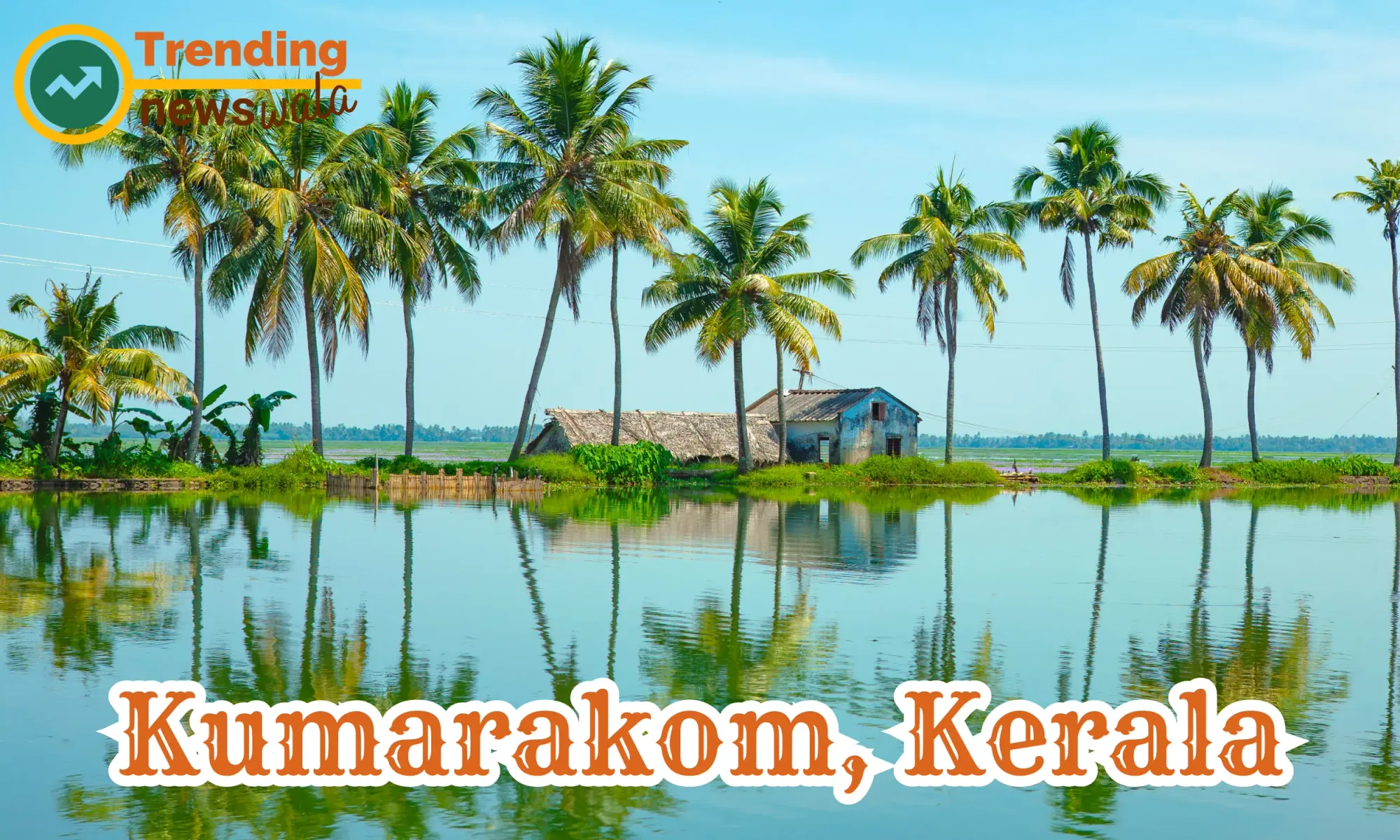
Kumarakom is a scenic village located in the Kottayam district of Kerala, India. Situated on the shores of Lake Vembanad, the largest freshwater lake in the state, Kumarakom is renowned for its backwaters, lush green landscapes, and abundant birdlife. It's a popular destination for those seeking a tranquil retreat amidst Kerala's natural beauty.
- Backwaters of Vembanad Lake: Kumarakom is primarily known for its picturesque backwaters, especially the ones formed by Vembanad Lake. Houseboats, also known as Kettuvallams, cruise through the interconnected canals, offering visitors a unique and relaxing experience amid the serene waters and green surroundings.
- Bird Watching at Kumarakom Bird Sanctuary: The Kumarakom Bird Sanctuary, situated on the banks of Vembanad Lake, is a haven for birdwatchers. The sanctuary is home to a variety of migratory and resident bird species, including waterfowl, egrets, herons, and kingfishers. The best time for birdwatching is during the migratory season from November to February.
- Village Life and Culture: Kumarakom provides an opportunity to experience the traditional lifestyle of Kerala. The village is dotted with coconut groves, paddy fields, and simple yet charming houses. Visitors can interact with the local residents and gain insights into the cultural nuances of Kerala.
- Kumarakom Backwater Cruise: Houseboat cruises through the backwaters of Kumarakom are a popular attraction. These cruises offer a unique way to explore the tranquil waterways, witness the local life along the banks, and enjoy the scenic beauty of the surroundings.
- Aruvikkuzhi Waterfall: Aruvikkuzhi Waterfall, located around 18 kilometers from Kumarakom, is a small yet picturesque waterfall surrounded by rubber plantations and lush greenery. It's a delightful spot for nature lovers and those looking for a refreshing escape.
- Pathiramanal Island: Pathiramanal, meaning "sands of night," is a small island on Vembanad Lake near Kumarakom. Accessible by boat, the island is a haven for birdwatchers and nature enthusiasts. It is known for its biodiversity and scenic beauty.
- Aymanam Village: Aymanam, located near Kumarakom, is known for its cultural significance and connection to the renowned Indian author Arundhati Roy, whose book "The God of Small Things" is set in this village. Visitors can explore the village and its surroundings to get a sense of the book's setting.
- Ettumanoor Mahadeva Temple: Ettumanoor Mahadeva Temple, situated around 13 kilometers from Kumarakom, is a historic Hindu temple dedicated to Lord Shiva. The temple is known for its impressive architecture, murals, and annual festival called Ettumanoor Uthsavam.
- Thirunakkara Mahadeva Temple: Thirunakkara Mahadeva Temple, located in the heart of Kottayam, is another prominent temple in the region. It is known for its intricate architecture and vibrant festivals.
- Kumarakom Craft Museum: The Kumarakom Craft Museum showcases traditional Kerala crafts and artifacts. Visitors can explore the museum to learn about the rich cultural heritage of the region.
- Kottayam: Kumarakom is in proximity to Kottayam, a city known for its rubber plantations, historic churches, and cultural events. Travelers can explore Kottayam for additional cultural experiences.
- Cuisine: Kumarakom offers a taste of authentic Kerala cuisine. Visitors can savor local delicacies such as appam, stew, karimeen (pearl spot fish) curry, and other traditional dishes.
Kumarakom's tranquil backwaters, diverse birdlife, and cultural richness make it an ideal destination for nature lovers and those seeking a peaceful escape. Whether cruising through the backwaters, exploring bird sanctuaries, or experiencing the local way of life, Kumarakom provides a serene and rejuvenating experience in the lap of Kerala's natural beauty.
Mahabaleshwar, Maharashtra
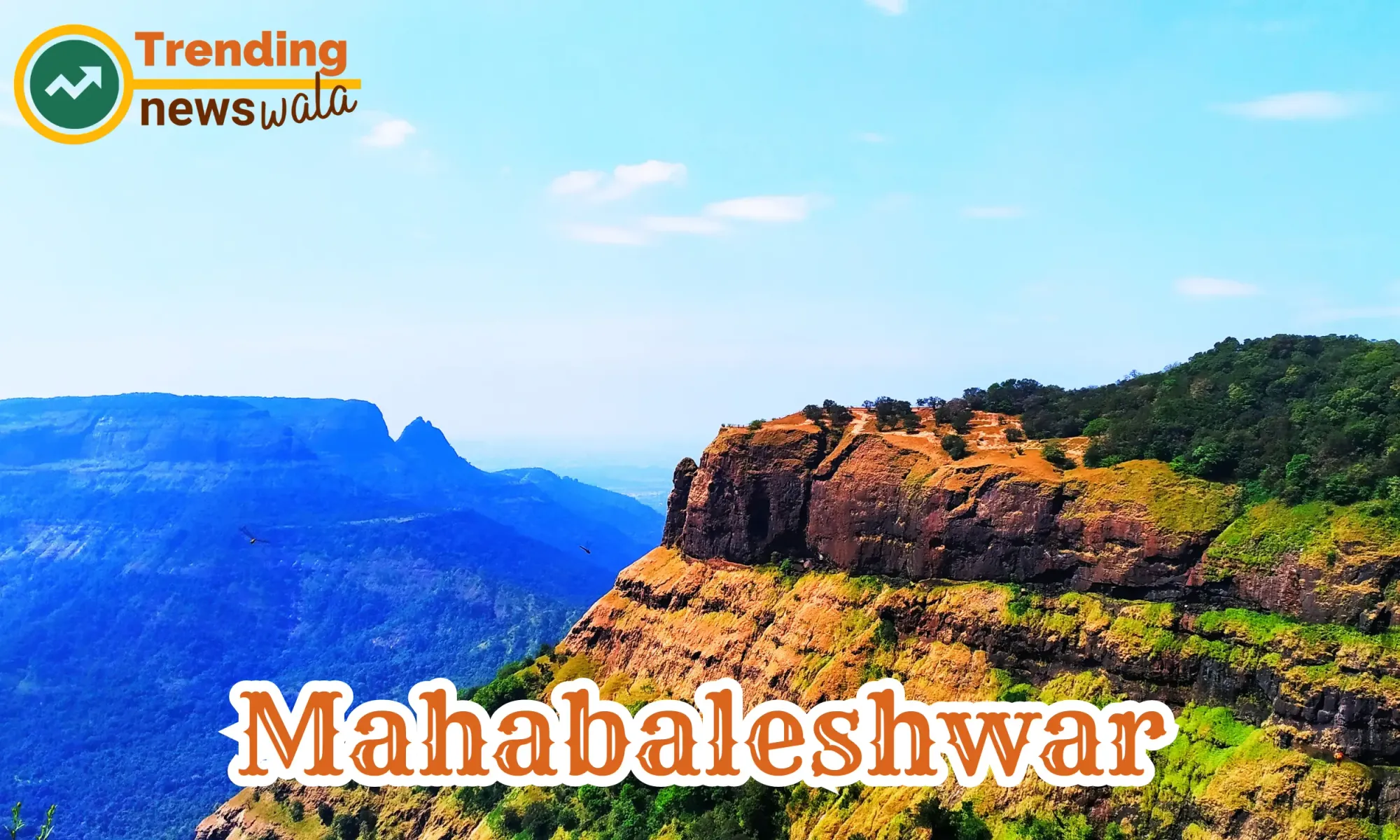
Mahabaleshwar is a popular hill station and tourist destination nestled in the Western Ghats of Maharashtra, India. Known for its scenic beauty, pleasant climate, and lush landscapes, Mahabaleshwar attracts visitors seeking a retreat from the hustle and bustle of city life.
- Location: Mahabaleshwar is situated in the Sahyadri mountain range, approximately 120 kilometers (75 miles) southwest of Pune. The hill station is known for its elevated position, offering panoramic views of the surrounding valleys and hills.
- Panchgani: Mahabaleshwar is often visited in conjunction with Panchgani, another scenic hill station located about 19 kilometers away. Panchgani is known for its tableland, strawberry farms, and colonial architecture.
- Vast Plateau: The town is situated on a vast plateau that measures around 150 square kilometers. The plateau is surrounded by hills and valleys, creating a stunning natural setting.
- Wilson Point: Wilson Point, also known as Sunrise Point, is the highest point in Mahabaleshwar. It offers breathtaking views of the sunrise and is a popular spot for nature lovers and photographers.
- Arthur's Seat: Arthur's Seat is another vantage point that provides stunning views of the surrounding valleys and the Savitri River. It is known for its unique rock formations and is a popular tourist attraction.
- Venna Lake: Venna Lake is a man-made reservoir surrounded by lush greenery. Visitors can enjoy boat rides on the lake and take in the picturesque landscapes. The area around the lake is also dotted with eateries and stalls.
- Pratapgad Fort: Located around 24 kilometers from Mahabaleshwar, Pratapgad Fort is a historic hill fort with significant cultural and historical importance. The fort offers panoramic views of the surrounding hills and forests.
- Mahabaleshwar Temple: The Mahabaleshwar Temple is dedicated to Lord Shiva and is one of the important religious sites in the region. The temple is known for its ancient architecture and sacred surroundings.
- Mapro Gardens: Mapro Gardens is a popular tourist attraction known for its strawberry farms and the production of fruit-based products. Visitors can explore the gardens, taste fresh strawberries, and buy a variety of fruit jams and syrups.
- Elephant's Head Point: Elephant's Head Point, named after the rock formations that resemble an elephant's head and trunk, offers spectacular views of the Sahyadri range. It's a great spot for nature enthusiasts and photography.
- Lingmala Waterfall: Lingmala Waterfall is a scenic waterfall surrounded by lush greenery. The waterfall is at its best during the monsoon season when it cascades down the rocks.
- Kate's Point and Needle Hole Point: Kate's Point and Needle Hole Point are vantage points that offer panoramic views of the valley and the distant hills. The points are named after a needle-like hole in the rocks at Needle Hole Point.
- Connaught Peak: Connaught Peak, also known as Mount Olympia, is the second-highest peak in Mahabaleshwar. It provides panoramic views of the Krishna Valley, surrounding hills, and the city below.
- Cuisine: Mahabaleshwar is known for its strawberries, and visitors can indulge in various strawberry-based products like fresh fruit, jams, and desserts. Additionally, the town offers a variety of Maharashtrian and local cuisine.
Mahabaleshwar's pleasant climate, scenic beauty, and array of viewpoints make it a sought-after destination for nature lovers, honeymooners, and weekend travelers. Whether exploring the viewpoints, enjoying boat rides on Venna Lake, or visiting historical sites, Mahabaleshwar offers a refreshing escape in the lap of nature.
Kodaikanal, Tamil Nadu
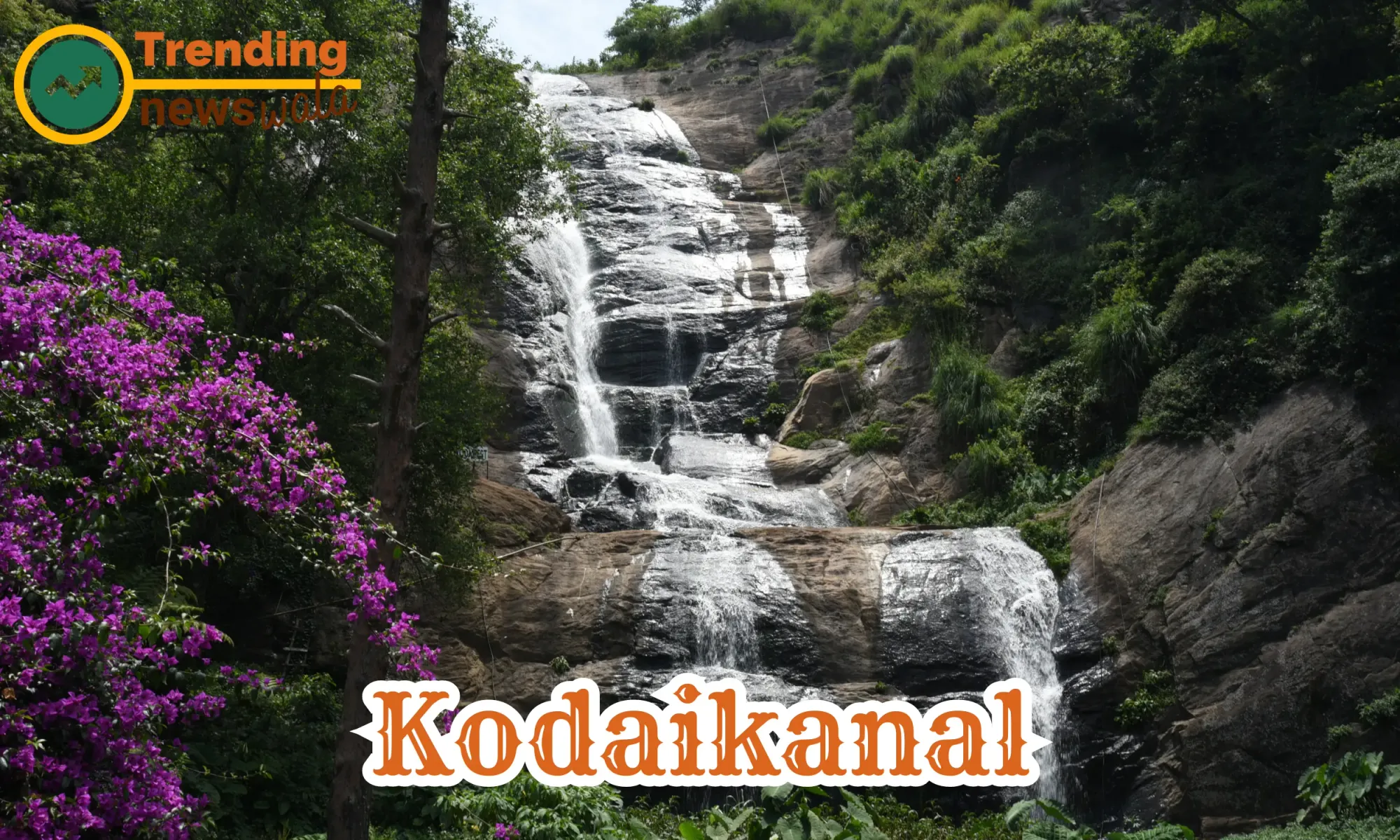
Kodaikanal is a charming hill station located in the southern Indian state of Tamil Nadu. Nestled in the Western Ghats, Kodaikanal is renowned for its cool climate, lush greenery, serene lakes, and mist-covered hills. Popularly known as the "Princess of Hill Stations," Kodaikanal attracts tourists with its picturesque landscapes, diverse flora, and a range of recreational activities.
- Geography and Location: Kodaikanal is situated at an altitude of approximately 2,133 meters (7,000 feet) above sea level in the Palani Hills of the Western Ghats. It is about 120 kilometers northwest of Madurai, a major city in Tamil Nadu.
- Kodai Lake: The heart of Kodaikanal is the Kodai Lake, a man-made, star-shaped lake surrounded by lush greenery. Boating facilities are available on the lake, allowing visitors to enjoy a peaceful ride while taking in the scenic beauty.
- Coaker's Walk: Coaker's Walk is a picturesque pedestrian path along the edge of steep slopes. It offers panoramic views of the surrounding hills, valleys, and the plains below. On clear days, the walkway provides breathtaking vistas of distant landscapes.
- Pine Forest: Kodaikanal is known for its Pine Forest, a serene and refreshing spot with tall pine trees creating a tranquil ambiance. The forest is popular for leisurely walks and picnics.
- Bryant Park: Bryant Park is a beautifully landscaped botanical garden near Kodai Lake. It features a variety of flowers, hybrids, and horticultural varieties. The park hosts an annual flower show in May, attracting visitors with its vibrant displays.
- Berijam Lake: Berijam Lake, located in a reserved forest area, is known for its clear blue waters surrounded by dense forests. The lake is a peaceful retreat, and access is restricted to protect the natural ecosystem.
- Dolphin's Nose: Dolphin's Nose is a viewpoint that offers a spectacular view of the surrounding hills and the plains below. The rock formation resembles a dolphin's nose, hence the name.
- Pillar Rocks: Pillar Rocks are a set of three vertically aligned granite rocks standing tall against the backdrop of lush greenery. The viewpoint provides stunning views of the rocks and the surrounding landscape.
- Guna Caves (Devil's Kitchen): Guna Caves, also known as Devil's Kitchen, is a set of caves surrounded by dense forests. The caves have an interesting mythological connection and are named after the Tamil film "Guna," which was shot there.
- Kurinji Andavar Temple: The Kurinji Andavar Temple is dedicated to Lord Murugan and is known for its association with the blooming of Kurinji flowers, which bloom once every 12 years. The temple offers panoramic views of the Western Ghats.
- Silver Cascade Falls: Silver Cascade is a scenic waterfall located on the way to Kodaikanal. The waterfall cascades down from a height amidst lush greenery, providing a refreshing stop for travelers.
- Shopping at the Anna Salai Market: The Anna Salai Market in Kodaikanal is a bustling market where visitors can shop for local handicrafts, woolens, spices, and homemade chocolates.
- Cuisine: Kodaikanal offers a variety of local and South Indian cuisine. Visitors can savor the local specialties, including the famous Kodaikanal cheese, homemade chocolates, and various vegetarian and non-vegetarian dishes.
Kodaikanal's pleasant weather, natural beauty, and array of attractions make it a popular destination for honeymooners, nature lovers, and those seeking a peaceful retreat in the hills of Tamil Nadu. Whether exploring the scenic viewpoints, enjoying a boat ride on Kodai Lake, or experiencing the tranquility of the Pine Forest, Kodaikanal offers a rejuvenating escape from the hustle and bustle of city life.
Leh-Ladakh, Jammu and Kashmir
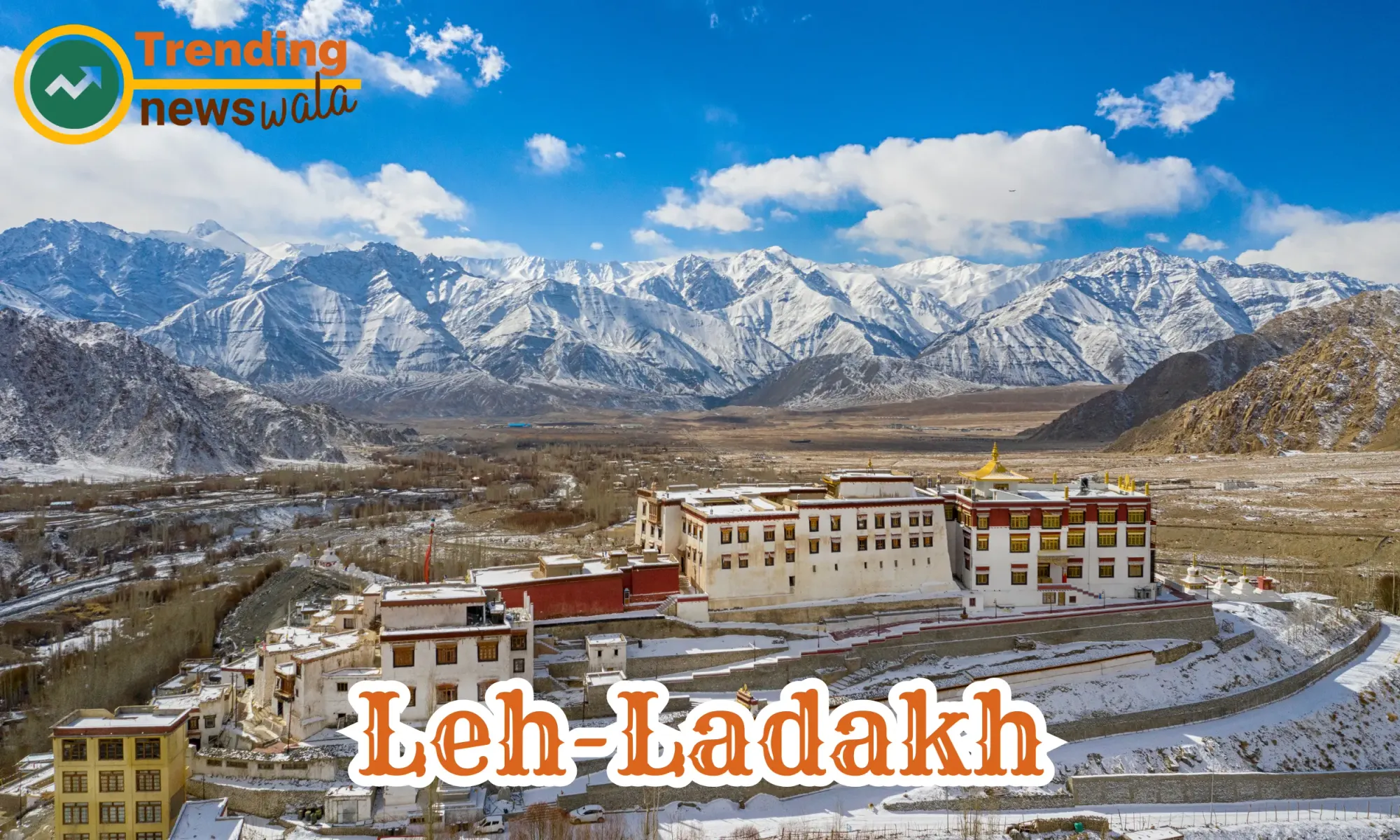
Leh-Ladakh is a region in the northern part of the Indian subcontinent, situated in the Union Territory of Jammu and Kashmir. Known for its breathtaking landscapes, high mountain passes, Buddhist monasteries, and unique cultural heritage, Leh-Ladakh has become a sought-after destination for adventure enthusiasts, nature lovers, and those seeking a distinct cultural experience.
- Geography and Location: Leh-Ladakh is located in the northernmost part of India, bordered by the Himalayas to the south and the Karakoram Range to the north. It is surrounded by the countries of Pakistan to the west and China to the north and east. The region comprises the districts of Leh and Kargil.
- Landscape: The landscape of Leh-Ladakh is characterized by high mountain ranges, arid deserts, and picturesque valleys. The Indus River, the main river of the region, flows through the valleys, contributing to the scenic beauty.
- High Altitude: Leh, the main town in Ladakh, is situated at an altitude of over 3,500 meters (11,500 feet) above sea level. The high altitude is a defining feature of the region and adds to the unique challenges and experiences for visitors.
- Buddhist Monasteries: Leh-Ladakh is home to several Buddhist monasteries, or gompas, each with its own distinct architecture, cultural significance, and spiritual aura. Hemis Monastery, Thiksey Monastery, Diskit Monastery, and Shey Monastery are among the prominent ones.
- Pangong Lake: Pangong Lake, situated at an altitude of about 4,350 meters (14,270 feet), is a high-altitude lake that stretches across the border into China. The lake is known for its changing colors and stunning reflections, making it a popular destination for tourists and photographers.
- Tso Moriri Lake: Tso Moriri is another high-altitude lake in Ladakh, surrounded by barren hills and snow-capped peaks. The lake is a serene and pristine destination, providing a peaceful retreat.
- Nubra Valley: Nubra Valley, accessible via the Khardung La Pass (one of the world's highest motorable passes), is known for its stark desert landscapes, sand dunes, and the confluence of the Shyok and Nubra Rivers.
- Khardung La Pass: Khardung La Pass, at an elevation of over 5,300 meters (17,500 feet), is one of the highest motorable passes in the world. The pass offers panoramic views of the surrounding mountains and is a popular destination for adventure enthusiasts.
- Magnetic Hill: The Magnetic Hill is a natural wonder where the layout of the terrain creates an optical illusion, making it appear as if vehicles are moving uphill without any power. It's a popular stop for tourists.
- Shanti Stupa: Shanti Stupa is a Buddhist white-domed stupa on a hilltop in Leh. It was built to promote peace and prosperity and offers panoramic views of the surrounding mountains and valleys.
- Local Culture: Ladakh has a unique cultural blend influenced by Tibetan Buddhism. The people of Ladakh are known for their warm hospitality, traditional festivals, and colorful attire.
- Adventure Activities: Leh-Ladakh is a haven for adventure enthusiasts. Trekking, river rafting, mountain biking, and motorbike tours are popular activities, attracting thrill-seekers from around the world.
- Ladakhi Cuisine: Ladakhi cuisine is influenced by Tibetan flavors and consists of hearty and wholesome dishes. Thukpa (noodle soup), momos (dumplings), and butter tea are among the local specialties.
- Hemis Festival: The Hemis Festival, held at the Hemis Monastery, is one of the most significant and colorful religious festivals in Ladakh. It celebrates the birth anniversary of Guru Padmasambhava with traditional dances and rituals.
- Accessibility: Leh-Ladakh is accessible by road and air. The region is well-connected by the Leh Kushok Bakula Rimpochee Airport, and the road journey through high mountain passes provides a scenic adventure.
Leh-Ladakh's stark and majestic landscapes, coupled with its rich cultural heritage, make it a destination that offers a unique and unforgettable experience for those seeking adventure, tranquility, and spiritual exploration. The region's remote and pristine beauty continues to draw travelers seeking an escape into the enchanting landscapes of the Himalayas.
As diverse as the cultures and landscapes of India itself, these 20 romantic destinations cater to every romantic whim, from the beach lovers to the mountain enthusiasts. Whether it's exploring historical monuments, relaxing on pristine beaches, or embracing the tranquility of the mountains, these destinations promise couples an unforgettable journey filled with love and enchantment.





